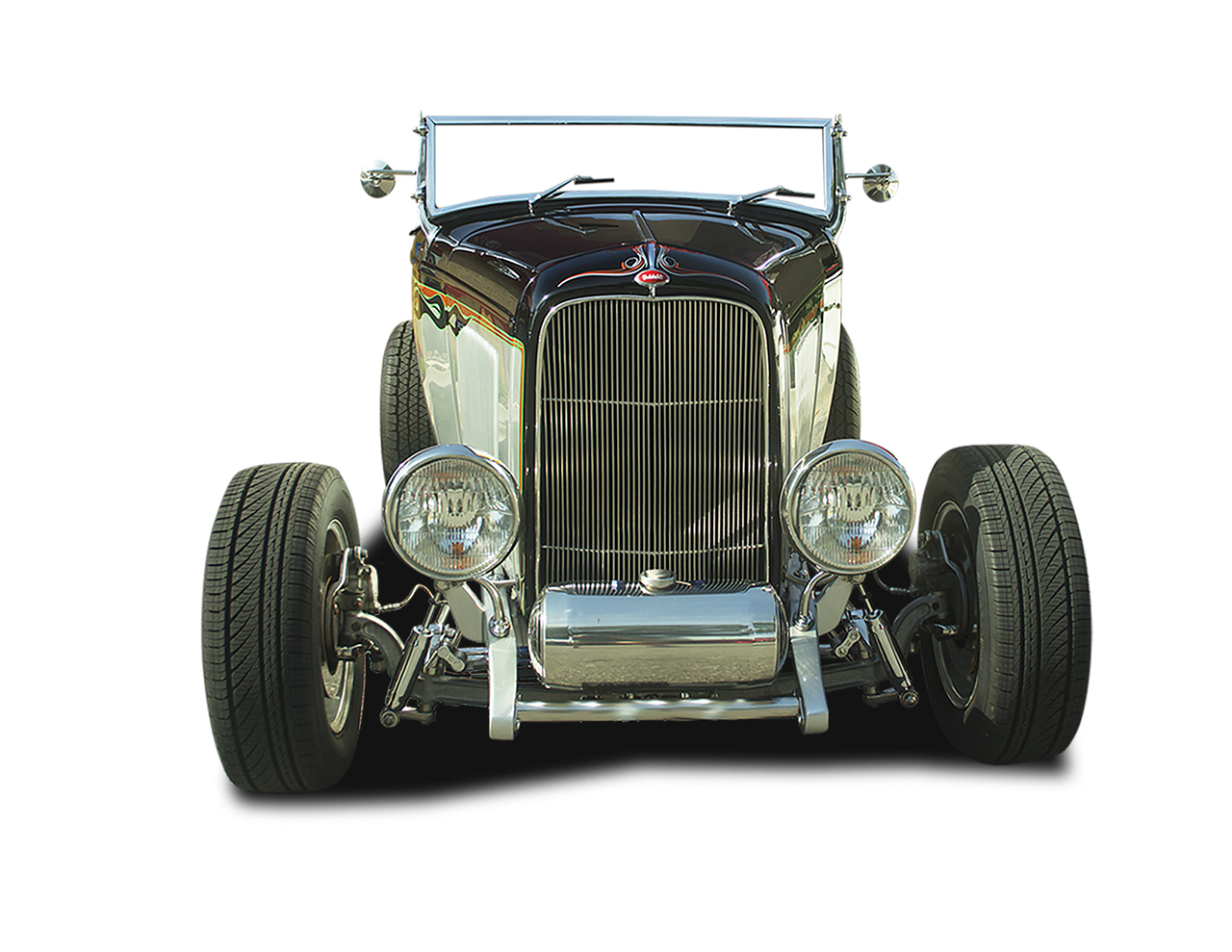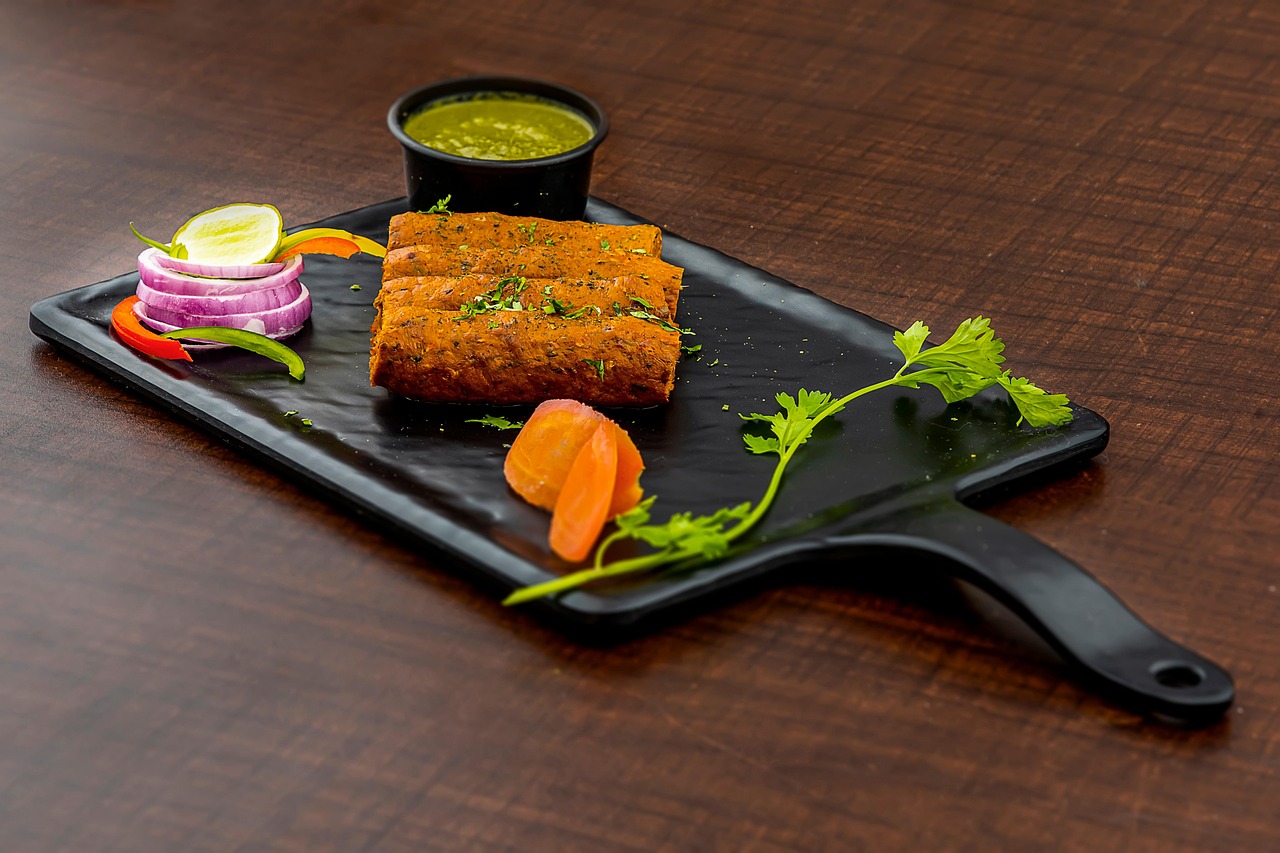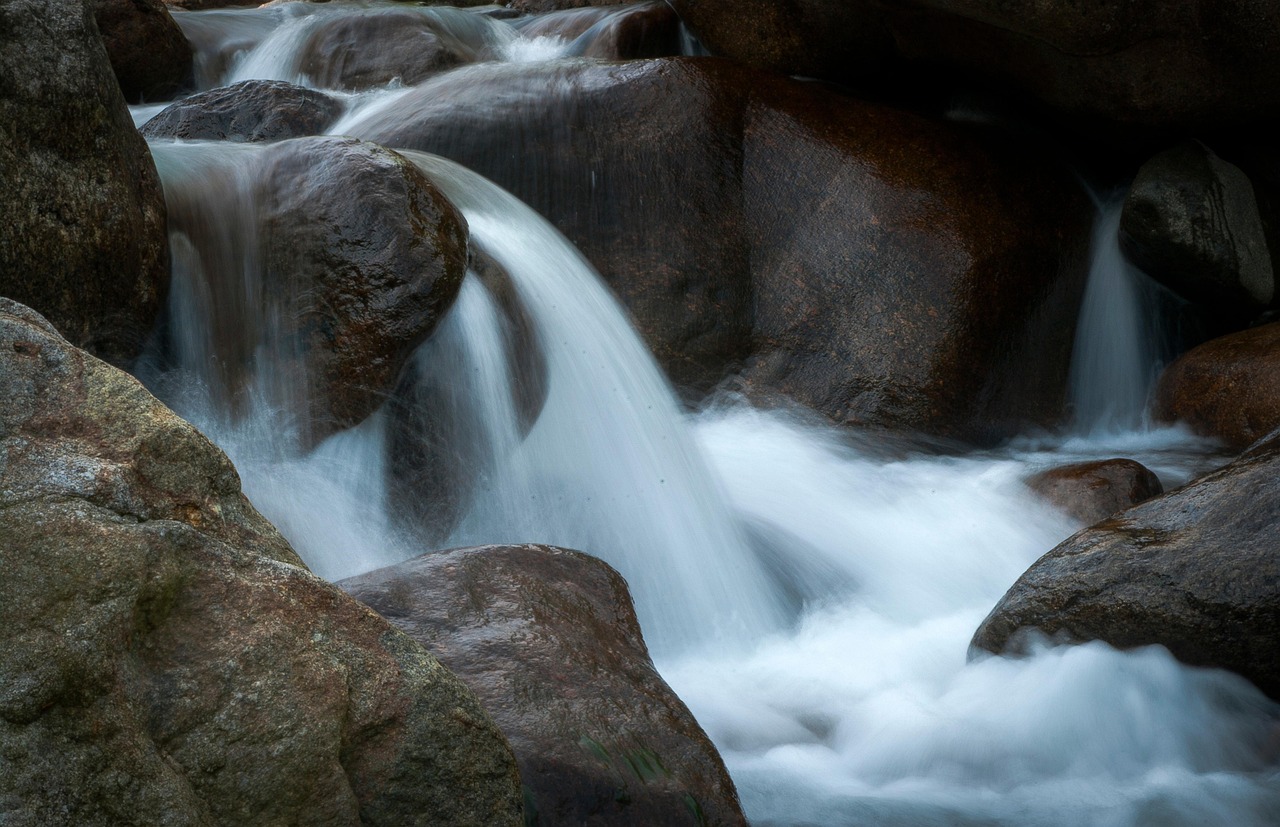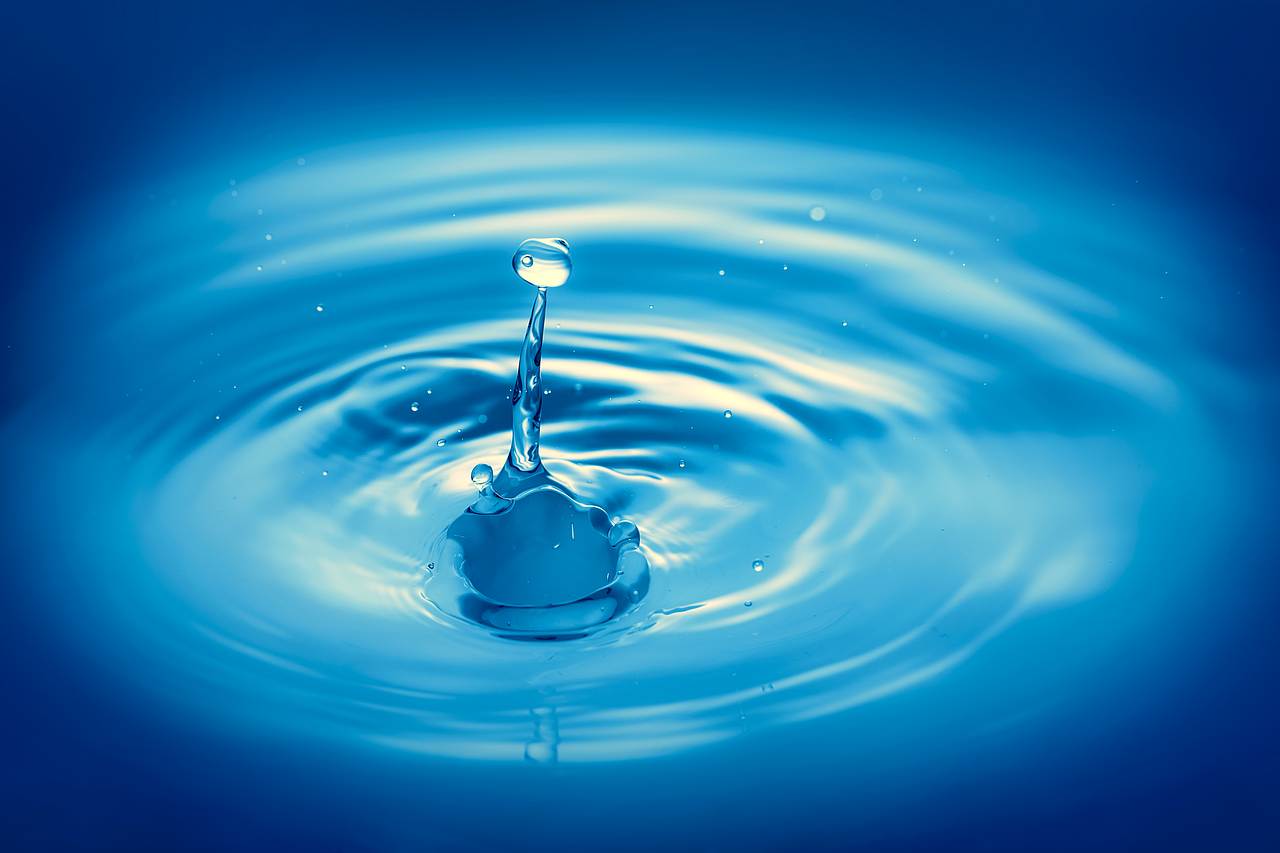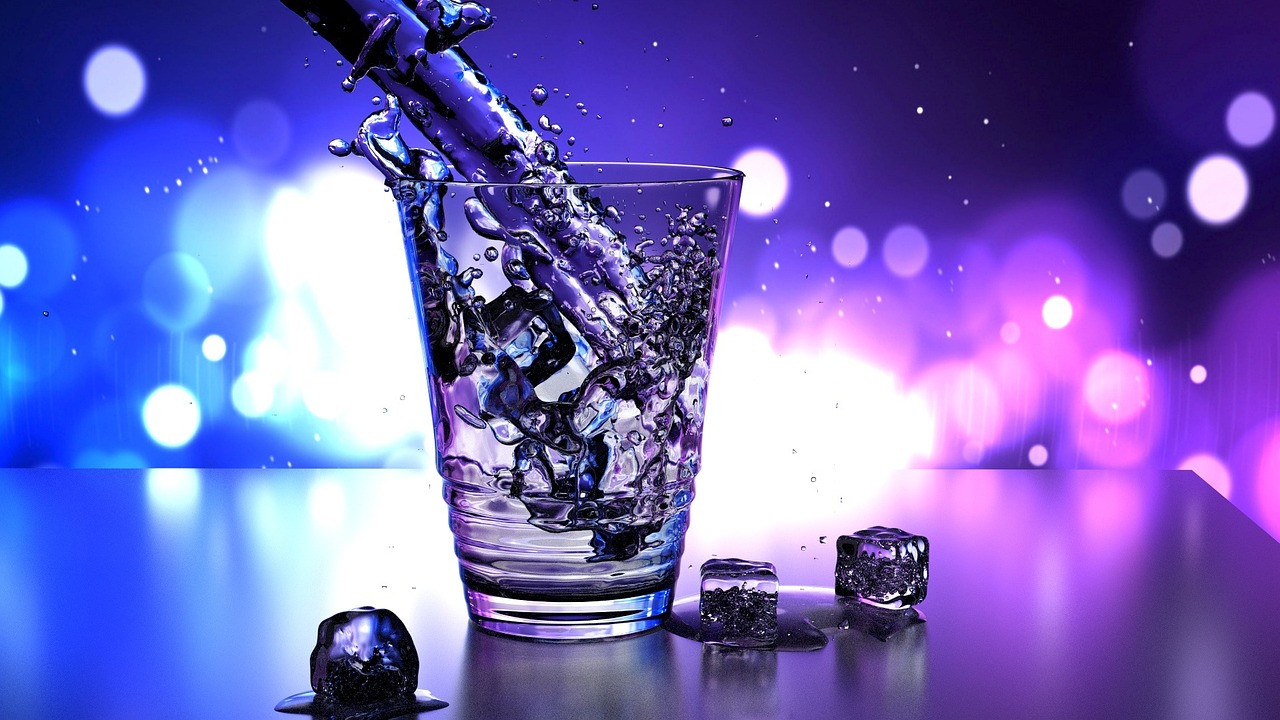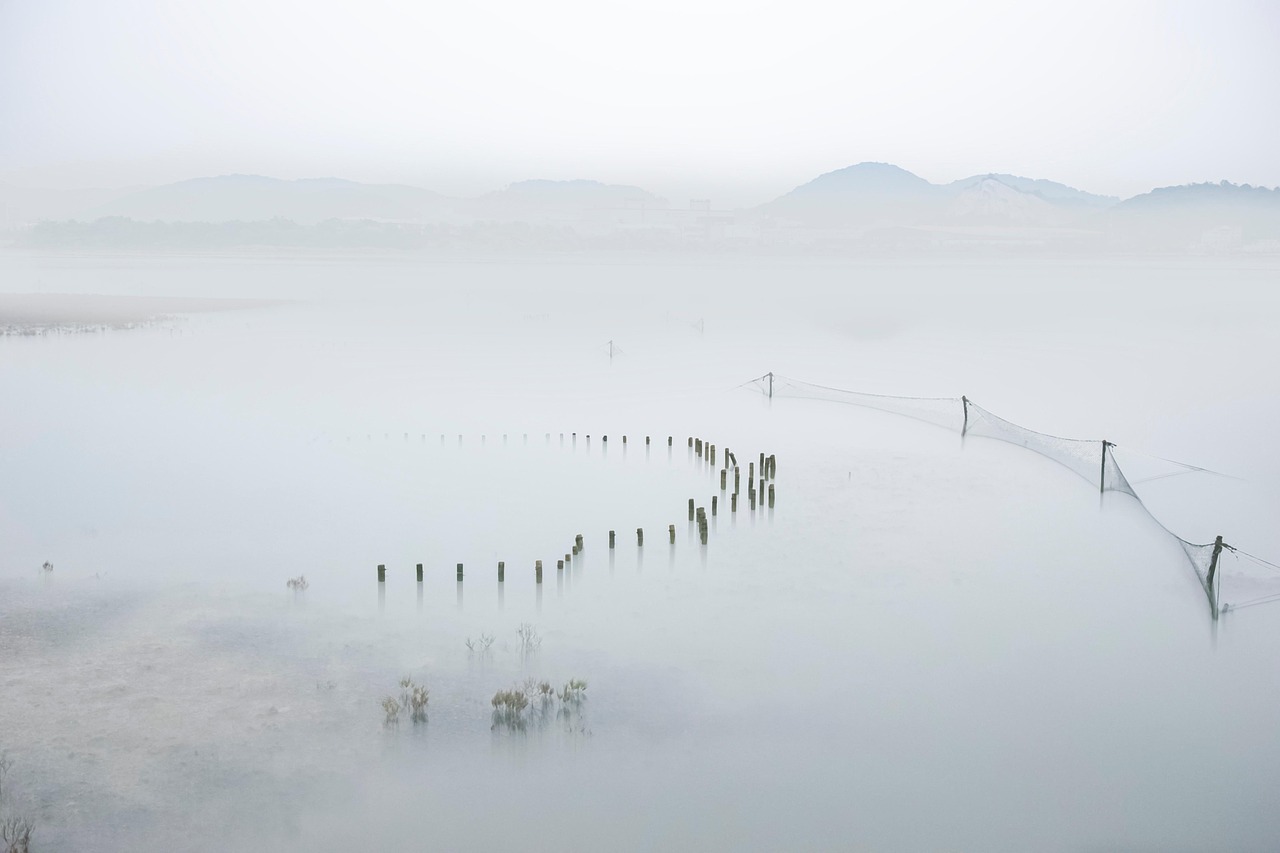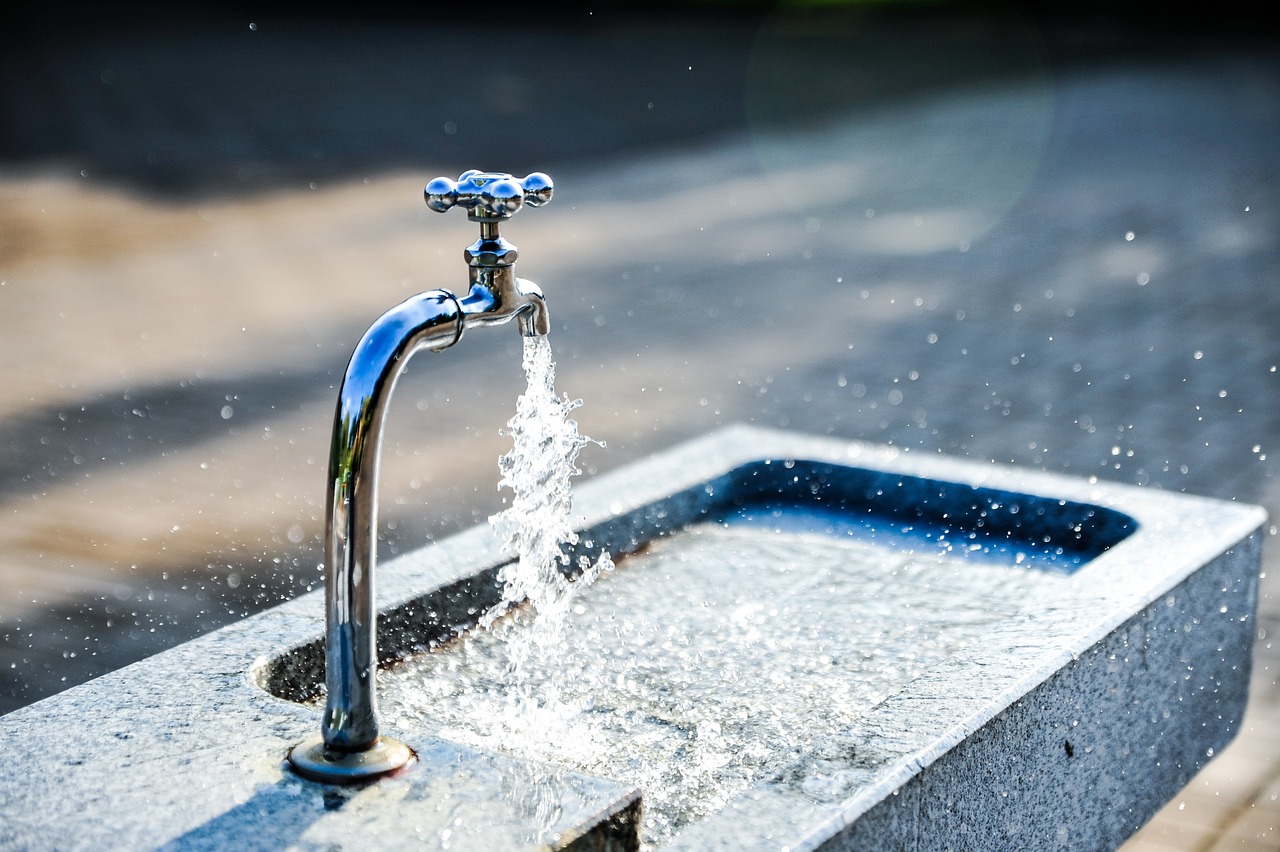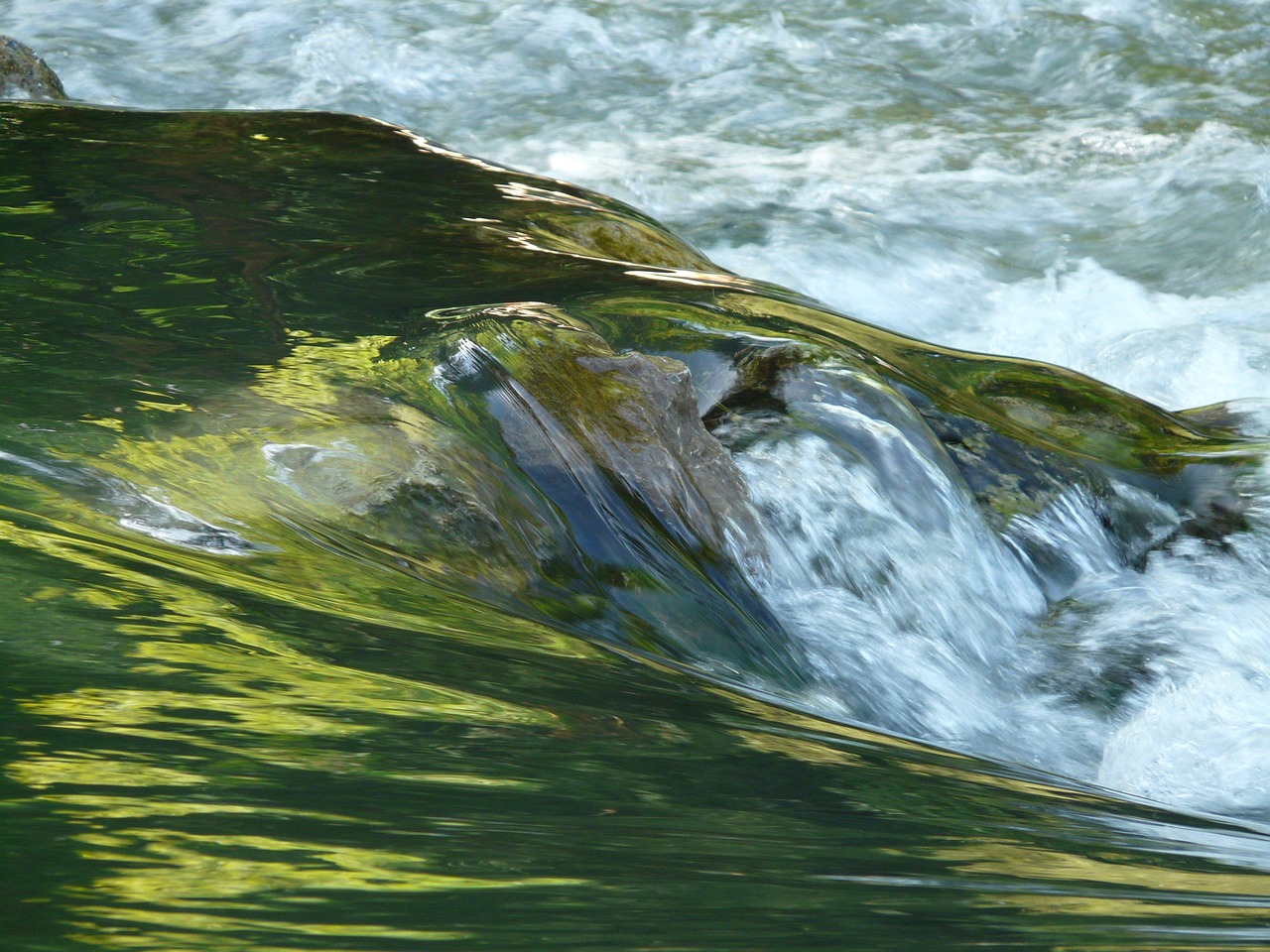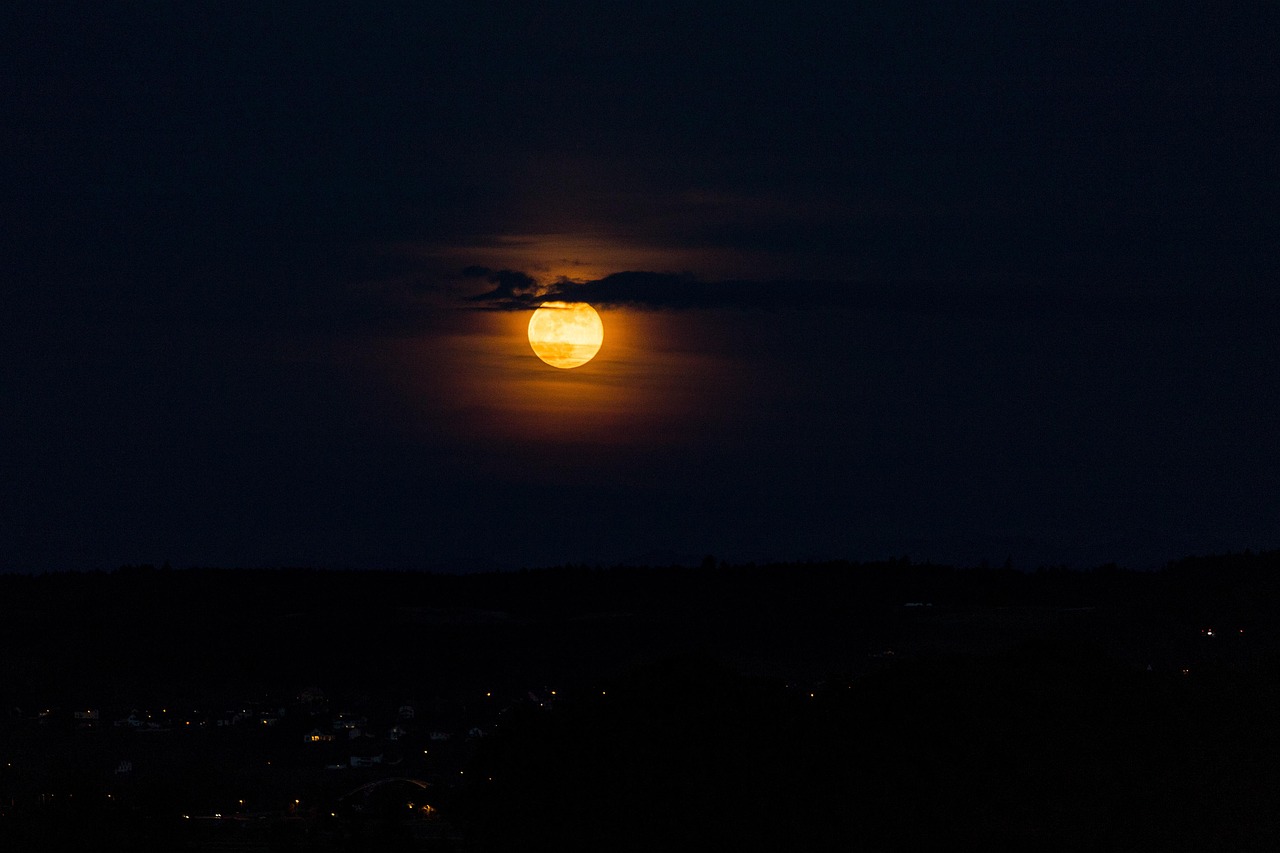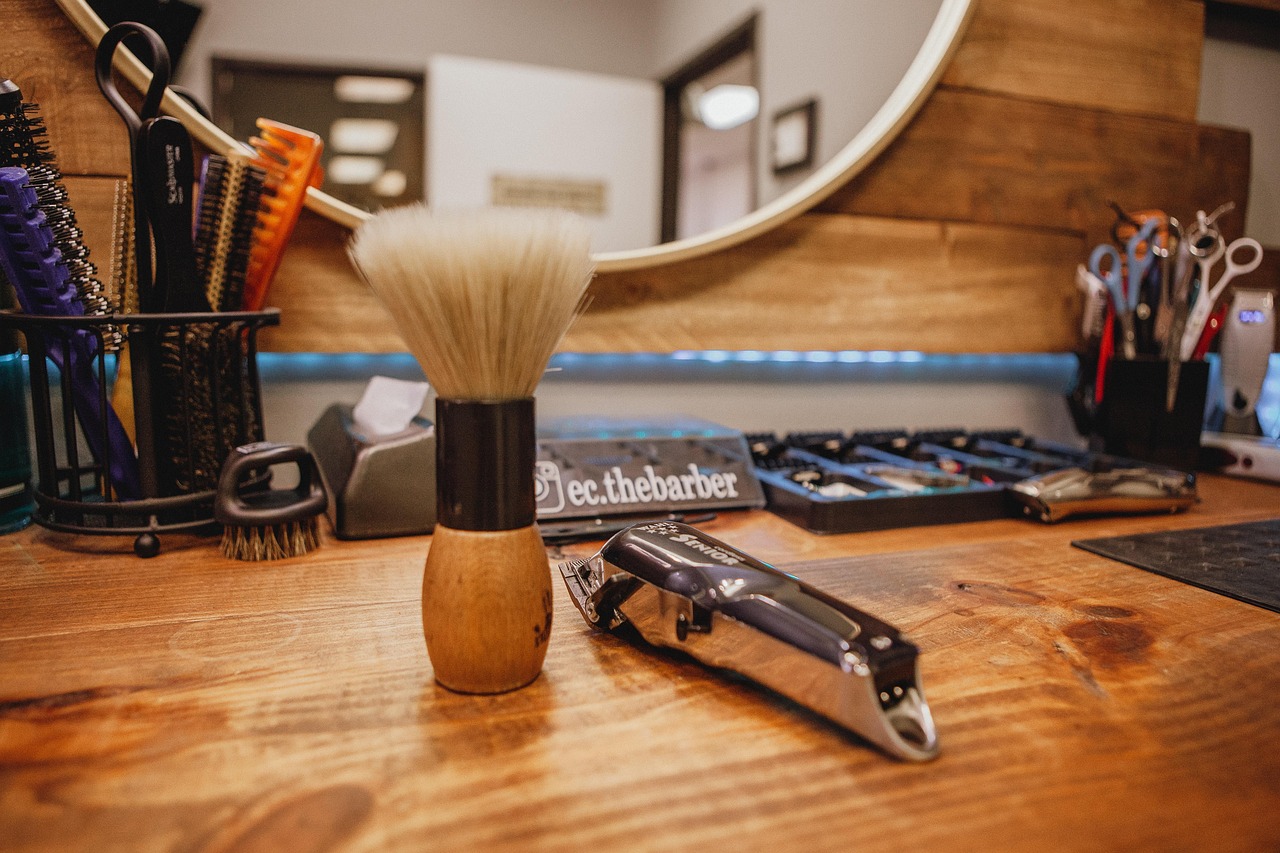This article delves into the intriguing phenomenon of whether hot water can freeze faster than cold water, exploring scientific principles, experiments, and expert opinions surrounding this age-old question.
The Mpemba Effect: An Overview
The Mpemba Effect describes the counterintuitive observation that hot water can freeze faster than cold water under certain conditions. This phenomenon, first documented by a Tanzanian student named Erasto Mpemba in the 1960s, has puzzled scientists and sparked numerous investigations. Understanding the Mpemba Effect requires a comprehensive look at the underlying physics and historical experiments that have sought to explain this behavior.
Scientific Principles Behind Freezing
- Molecular Motion and Temperature: Temperature significantly influences molecular motion. Hot water molecules move rapidly, while cold water molecules are slower, impacting how they lose heat and transition into a solid state.
- Heat Transfer Mechanisms: Heat transfer occurs through conduction, convection, and radiation. The efficiency of these mechanisms can differ between hot and cold water, affecting the freezing rate significantly.
- The Role of Evaporation: Evaporation plays a crucial role in the Mpemba Effect. When hot water evaporates, it reduces the volume that needs to freeze, potentially allowing it to freeze faster than cold water.
- Supercooling: Supercooling occurs when water cools below its freezing point without solidifying. This phenomenon can influence the freezing process, particularly in cold water, complicating the comparison between hot and cold.
Historical Experiments and Findings
Numerous experiments have been conducted to test the Mpemba Effect, yielding varying results. Some notable experiments include those by Mpemba himself, which sparked interest, as well as more recent studies that have attempted to replicate and understand the phenomenon. These investigations reveal that factors such as container type, environmental conditions, and water purity can significantly influence outcomes.
Factors Influencing Freezing Rates
| Factor | Influence on Freezing |
|---|---|
| Container Shape and Material | The shape and material of the container can significantly impact heat dissipation. Metal containers may conduct heat away faster than plastic, affecting freezing times. |
| Water Purity | The presence of impurities in water, such as salts or minerals, can alter freezing points and rates, making the chemical composition of water crucial in freezing experiments. |
| Ambient Temperature | Surrounding temperature can affect the rate at which heat is lost from water, influencing how quickly it freezes. |
Practical Implications of the Mpemba Effect
While the Mpemba Effect may seem purely academic, it has practical implications in various fields, including:
- Food Preservation: Understanding freezing rates can help optimize food storage methods, ensuring better preservation of texture and flavor in frozen foods.
- Cryogenics: The principles behind the Mpemba Effect can inform methods for freezing biological samples, potentially improving outcomes in medical and scientific research.
Expert Opinions on the Mpemba Effect
Experts continue to study the Mpemba Effect, offering insights into its validity and the conditions that may influence it. While there is no definitive consensus on this phenomenon, ongoing research aims to better understand the circumstances under which hot water may freeze faster than cold water. Future studies may focus on controlled experiments and advanced technologies to isolate variables, ultimately providing clearer answers to this intriguing scientific question.
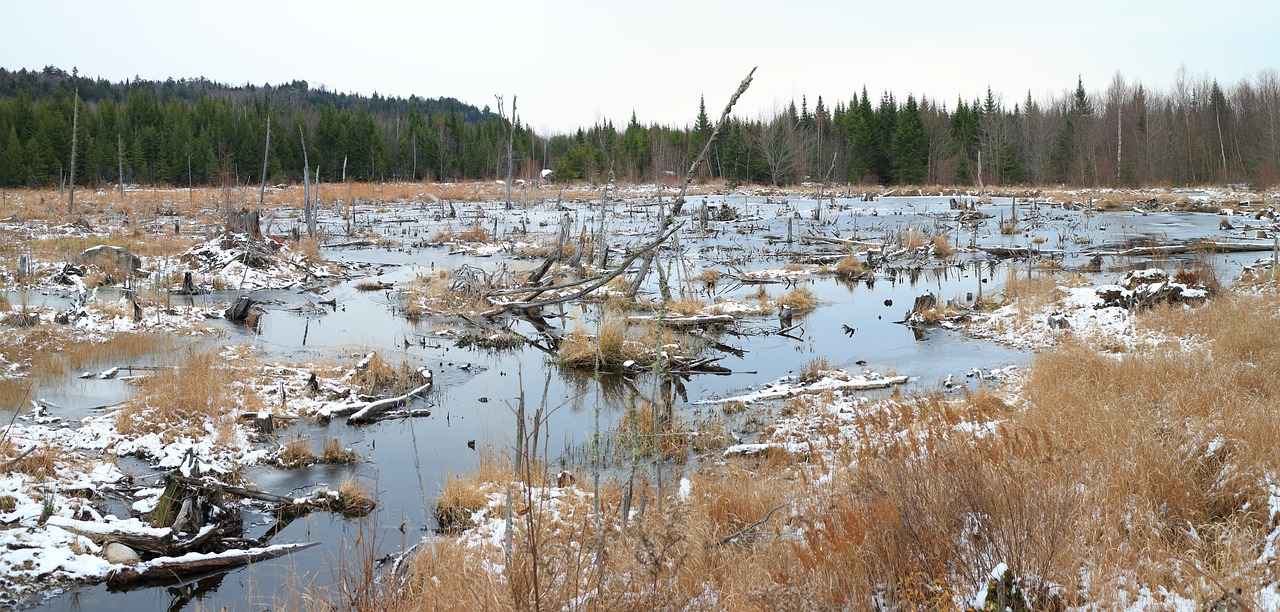
The Mpemba Effect: An Overview
The Mpemba Effect is a fascinating phenomenon that challenges our conventional understanding of freezing. It refers to the observation that, under certain conditions, hot water can freeze faster than cold water. This counterintuitive effect has intrigued scientists and laypeople alike for decades, prompting numerous studies and experiments aimed at uncovering the underlying principles at play.
To fully appreciate the Mpemba Effect, one must delve into the physics of water and the conditions that facilitate this unusual behavior. The phenomenon is named after Erasto Mpemba, a Tanzanian student who, in the 1960s, noticed that hot ice cream mix froze faster than cold mix. This observation sparked interest and led to further investigations into the mechanisms behind the effect.
At its core, the Mpemba Effect can be attributed to several scientific principles. Thermodynamics, the branch of physics that deals with heat and temperature, plays a crucial role in understanding how water transitions from a liquid to a solid state.
- Molecular Motion: In hot water, molecules move rapidly due to increased kinetic energy, which can lead to a more efficient loss of heat as they begin to cool down. In contrast, the slower-moving molecules in cold water may not dissipate heat as effectively.
- Heat Transfer: The mechanisms of heat transfer—conduction, convection, and radiation—vary between hot and cold water. Hot water may experience enhanced evaporation, which can lead to a reduction in volume and a quicker freezing process.
- Evaporation: As hot water evaporates, it loses mass, meaning there is less water to freeze. This reduction in volume can significantly alter the freezing dynamics.
- Supercooling: Cold water may supercool, remaining liquid below its freezing point without solidifying. This phenomenon complicates direct comparisons between hot and cold water freezing rates.
Numerous experiments have sought to validate the Mpemba Effect, with mixed results. Some studies, like those conducted by Mpemba himself, demonstrated the effect, while others have failed to replicate the findings. Factors such as container material, environmental conditions, and water purity all influence the outcomes of these experiments.
| Experiment | Findings |
|---|---|
| Mpemba’s Original Experiment | Hot water froze faster than cold water under specific conditions. |
| Recent Studies | Inconsistent results; some confirm the effect while others do not. |
Several variables can affect the freezing rates of hot and cold water. These include:
- Container Shape: Different shapes can alter heat dissipation rates, with wider containers allowing for faster cooling.
- Material: Metal containers may conduct heat away more efficiently than plastic ones.
- Water Purity: Impurities in water, such as minerals or salts, can lower the freezing point and alter the freezing process.
The Mpemba Effect is not merely a scientific curiosity; it has practical applications in various fields, including:
- Food Preservation: Understanding freezing rates can optimize food storage methods, preserving texture and flavor.
- Cryogenics: Insights from the Mpemba Effect can enhance the freezing of biological samples, improving outcomes in medical research.
In conclusion, the Mpemba Effect remains a captivating topic that blends science with practical implications. Ongoing research continues to explore this phenomenon, aiming to clarify the conditions under which hot water may freeze faster than cold water. As scientists delve deeper into the intricacies of thermodynamics and molecular behavior, we may soon uncover more definitive answers to this age-old question.
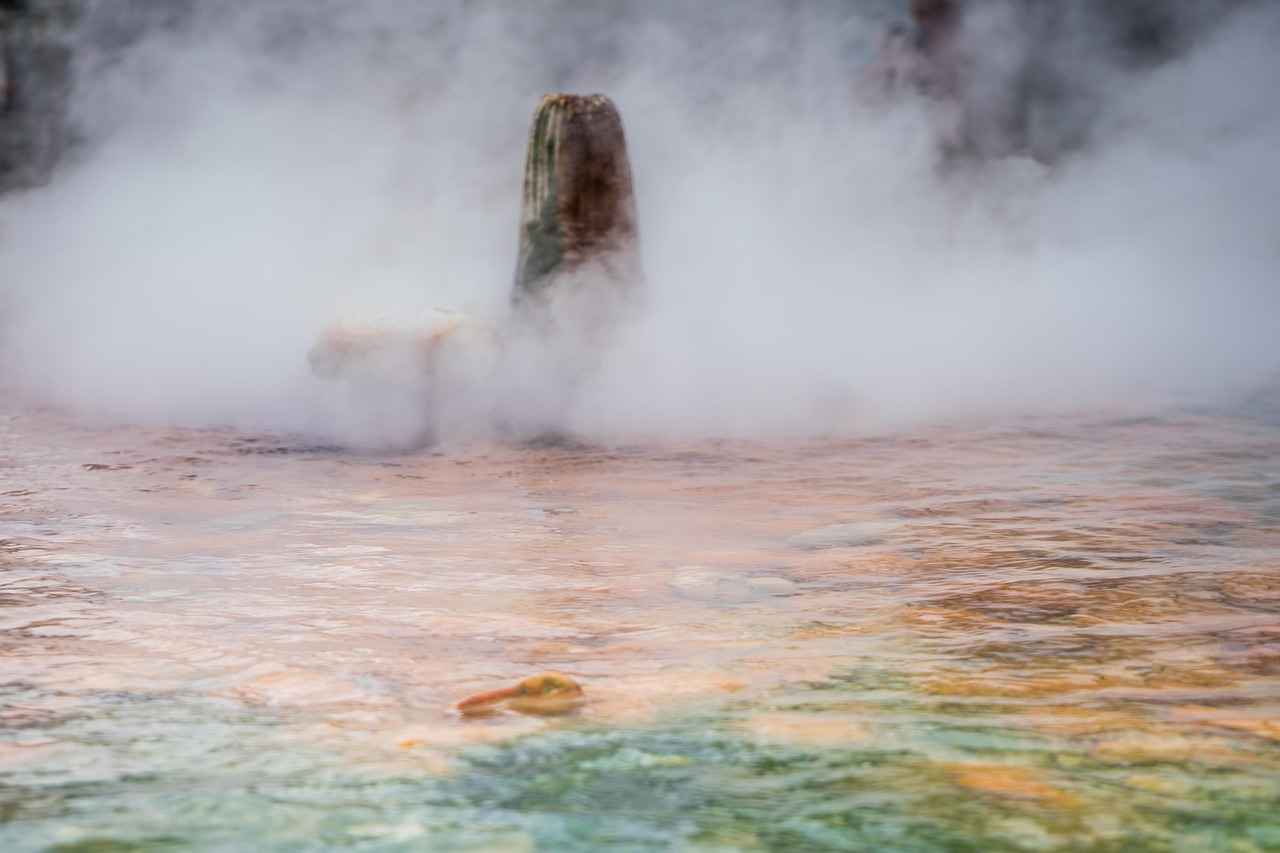
Scientific Principles Behind Freezing
The phenomenon of whether hot water freezes faster than cold water has intrigued scientists and laypeople alike for centuries. To understand this curious behavior, it is essential to delve into the scientific principles that govern the freezing process. This exploration includes the thermodynamics of water, the molecular behavior of water, and the dynamics of heat transfer.
Temperature plays a pivotal role in determining the motion of water molecules. In hot water, molecules possess a higher kinetic energy, causing them to move rapidly. This increased motion can influence how quickly they lose heat. As hot water begins to cool, the molecules are still in a state of vigorous movement, which can enhance the rate of heat loss compared to their cold counterparts.
Heat transfer occurs through three primary mechanisms: conduction, convection, and radiation. Each of these mechanisms can operate differently depending on the temperature of the water. For example, hot water may experience more efficient heat transfer due to the greater temperature gradient between the water and its surroundings.
- Conduction: This is the transfer of heat through direct contact. Hot water in a metal container may lose heat more rapidly than cold water in a plastic container.
- Convection: This involves the movement of fluid, which can enhance heat loss. In hot water, the rapid movement of molecules can create convection currents that facilitate cooling.
- Radiation: While less significant than conduction and convection, hot water can also lose heat through thermal radiation, emitting infrared energy.
Evaporation is another critical factor in the freezing process. When hot water is exposed to the air, it tends to evaporate more quickly than cold water. This evaporation reduces the volume of water that needs to freeze, potentially allowing it to reach the freezing point faster. The loss of mass through evaporation can significantly alter the dynamics of the freezing process.
Supercooling occurs when water cools below its freezing point without solidifying. This phenomenon can complicate the comparison between hot and cold water. Cold water is more prone to supercooling, which can delay the freezing process. In contrast, hot water may avoid supercooling due to the rapid molecular motion that promotes crystallization.
Several factors can influence the freezing rates of both hot and cold water. These include:
- Container Shape and Material: The design and material of the container can significantly impact how quickly heat is dissipated.
- Water Purity: Impurities in the water, such as dissolved salts or minerals, can alter the freezing point and affect the rate of freezing.
- Ambient Temperature: The temperature of the surrounding environment can also play a crucial role in how quickly water freezes.
Understanding these scientific principles not only sheds light on the Mpemba Effect but also provides insights into practical applications in various fields, including food preservation and cryogenics. As researchers continue to investigate this fascinating phenomenon, they strive to uncover the intricate details of how temperature, molecular behavior, and external factors interplay in the freezing process.
Molecular Motion and Temperature
Understanding the relationship between temperature and molecular motion is crucial in grasping the fascinating dynamics of water as it transitions between states. Temperature is a measure of the average kinetic energy of molecules; thus, it plays a significant role in determining how quickly or slowly molecules move. In the context of water, this relationship becomes particularly interesting when we consider the freezing process.
When water is heated, its molecules gain energy and begin to move more rapidly. This increased motion results in a higher average kinetic energy, causing the molecules to collide with one another more frequently and with greater force. As a result, the molecules are less likely to come together to form a solid structure, which is essential for freezing. Conversely, in cold water, the molecules possess less energy and move more slowly. This slower motion increases the likelihood that they will lose energy and arrange themselves into a solid formation, ultimately leading to freezing.
The transition from liquid to solid involves a delicate balance of energy loss and molecular arrangement. As hot water cools, it may initially seem counterintuitive that it can freeze faster than cold water. However, this phenomenon can be attributed to several factors, including heat transfer mechanisms and evaporation rates.
| Temperature | Molecular Motion | Freezing Rate |
|---|---|---|
| Hot Water | Rapid | Potentially Faster |
| Cold Water | Slow | Slower |
Additionally, as hot water evaporates, it loses mass, which can lead to a more efficient freezing process. This evaporation reduces the volume of water that needs to reach the freezing point, allowing the remaining water to freeze more quickly. Furthermore, the Mpemba Effect highlights the complex interplay of these factors, suggesting that under specific conditions, hot water can indeed freeze faster than cold water.
It’s important to note that the molecular behavior of water is not solely dictated by temperature. Other factors, such as the container shape, water purity, and ambient temperature, also play significant roles in the freezing process. For instance, water in a shallow, wide container may freeze faster than in a tall, narrow one due to the increased surface area exposed to the cold air.
In conclusion, the relationship between temperature and molecular motion is pivotal in understanding why hot water can sometimes freeze faster than cold water. The rapid movement of molecules in hot water, combined with factors such as evaporation and heat transfer, creates a unique scenario that challenges conventional thinking about freezing rates. As research continues to explore this intriguing phenomenon, our understanding of the underlying principles will deepen, shedding light on the complexities of water’s behavior.
Heat Transfer Mechanisms
Understanding the intricacies of is essential when exploring the phenomenon of freezing rates in water. Heat transfer occurs through three primary mechanisms: conduction, convection, and radiation. Each of these mechanisms plays a distinct role in how heat energy moves between substances, particularly between hot and cold water.
Conduction is the process where heat energy is transferred through direct contact between molecules. In the context of water, this means that the molecules in the hot water, which are moving rapidly, collide with the slower-moving molecules in the cold water or the container. The efficiency of conduction can significantly influence the freezing rate. For instance, a metal container can conduct heat away more rapidly than a plastic one, leading to faster cooling of the water inside.
Convection involves the movement of heat through the fluid itself. When water is heated, the warmer, less dense water tends to rise, while the cooler, denser water sinks. This creates a circulation pattern that can enhance heat transfer. In scenarios where hot water is placed in a freezer, the convection currents can facilitate faster cooling, potentially leading to a quicker freezing process compared to cold water that may have less vigorous convection currents.
Radiation is the transfer of heat through electromagnetic waves, which can occur even in a vacuum. While this mechanism is less significant in the freezing of water compared to conduction and convection, it still plays a role in heat loss. For example, if hot water is exposed to a cooler environment, it can lose heat through radiation, affecting its overall freezing time.
The temperature of the water significantly impacts how efficiently these heat transfer mechanisms operate. Hot water, with its higher energy state, can facilitate faster conduction and convection compared to cold water. This difference in energy levels can lead to varying freezing rates, especially when other factors, like container shape and ambient temperature, are considered.
Environmental conditions, such as ambient temperature and airflow, also play a crucial role in the freezing process. For instance, placing hot water in a well-ventilated area may enhance evaporation, which can reduce the volume of water that needs to freeze, allowing it to freeze faster than cold water. Moreover, the surrounding temperature can influence the rate of heat loss through conduction and convection.
The implications of understanding heat transfer mechanisms extend beyond theoretical discussions. In practical applications, such as food preservation and cryogenics, knowledge of how different temperatures affect freezing can lead to improved methods for storing and preserving biological materials. For example, in culinary practices, knowing how to optimize freezing rates can help maintain the texture and flavor of foods.
In conclusion, the efficiency of heat transfer mechanisms—conduction, convection, and radiation—plays a pivotal role in determining the freezing rates of hot and cold water. By understanding these processes, we can better comprehend the complexities of the Mpemba Effect and its practical applications in various fields.
The Role of Evaporation
The phenomenon of whether hot water freezes faster than cold water has intrigued scientists and laypeople alike for centuries. One of the key factors contributing to this counterintuitive observation is evaporation. Understanding the role of evaporation in this context is essential for grasping the complexities of the Mpemba Effect.
When hot water is exposed to cooler air, it begins to lose heat rapidly. This heat loss leads to a significant amount of evaporation, where water molecules at the surface gain enough energy to escape into the air. This process not only reduces the overall volume of water but also alters the temperature dynamics of the remaining liquid.
To illustrate this, consider the following points:
- Volume Reduction: As hot water evaporates, the total volume decreases. With less water to freeze, the remaining liquid can reach the freezing point more quickly.
- Molecular Dynamics: The molecules that remain in the liquid state after evaporation are cooler than before. This cooling effect can enhance the freezing process.
- Increased Surface Area: The evaporation process can also create a larger surface area for heat loss, facilitating faster cooling of the remaining water.
Additionally, the rate of evaporation is influenced by several factors, including ambient temperature, airflow, and humidity. For instance, in dry and breezy conditions, evaporation occurs more rapidly, which could further expedite the freezing of hot water compared to cold water.
Moreover, the heat transfer mechanisms at play also play a crucial role. Hot water, due to its higher temperature, can transfer heat to the surrounding environment more effectively through conduction and convection. As the hot water loses heat, the evaporation process accelerates, creating a cycle that can lead to faster freezing times.
Interestingly, some studies have even suggested that the presence of impurities in water can influence the evaporation rate and, consequently, the freezing process. Pure water may evaporate differently than water that contains minerals or other substances, adding another layer of complexity to the Mpemba Effect.
In summary, the role of evaporation in the Mpemba Effect is multifaceted. It not only reduces the volume of water that needs to freeze but also alters the thermal dynamics of the remaining liquid. Understanding these principles can provide valuable insights into this fascinating phenomenon, highlighting the intricate relationship between temperature, evaporation, and freezing.
Supercooling: A Complicating Factor
Supercooling is a fascinating phenomenon in the realm of physical sciences, particularly when discussing the freezing process of water. This occurs when water is cooled below its freezing point of 0°C (32°F) without transitioning into a solid state. The implications of supercooling are significant, especially when comparing the freezing rates of hot and cold water.
Understanding Supercooling
To fully appreciate the impact of supercooling, it’s essential to understand the conditions under which it occurs. Water can remain in a liquid state even at temperatures well below freezing, provided that it is free from impurities and disturbances that would normally trigger crystallization. This means that supercooled water can exist at temperatures as low as -40°C (-40°F) without forming ice, presenting unique challenges when studying freezing rates.
Impact on Freezing Comparison
When comparing the freezing rates of hot and cold water, supercooling introduces a layer of complexity. Cold water is more likely to supercool than hot water due to its lower initial temperature and the presence of impurities that can promote ice formation. In contrast, hot water, while initially having a higher temperature, may lose heat more rapidly due to evaporation and convection currents, potentially preventing it from entering a supercooled state.
Factors Influencing Supercooling
- Purity of Water: The presence of impurities such as salts or minerals can act as nucleation sites, making it easier for ice crystals to form. Pure water is more likely to supercool.
- Container Conditions: The type of container used can also affect supercooling. Smooth surfaces can promote supercooling, while rough surfaces may encourage ice formation.
- Environmental Factors: Ambient temperature and pressure play a crucial role in determining whether water will supercool. Rapid cooling can also contribute to this phenomenon.
Real-World Applications of Supercooling
Supercooling is not just a scientific curiosity; it has practical implications in various fields:
- Cryogenics: In cryogenics, understanding supercooling is vital for preserving biological samples and other materials that require low-temperature storage.
- Food Technology: The food industry utilizes knowledge of supercooling to improve freezing techniques, enhancing the quality and texture of frozen foods.
- Climate Studies: Supercooling phenomena can also provide insights into atmospheric processes, particularly in understanding how clouds form and precipitation occurs.
Conclusion
In summary, supercooling is an intriguing factor that complicates the comparison between the freezing rates of hot and cold water. By understanding the conditions that lead to supercooling, researchers can better grasp the complexities of the freezing process. This knowledge not only advances scientific understanding but also has practical applications across various industries, highlighting the importance of continued research in this area.
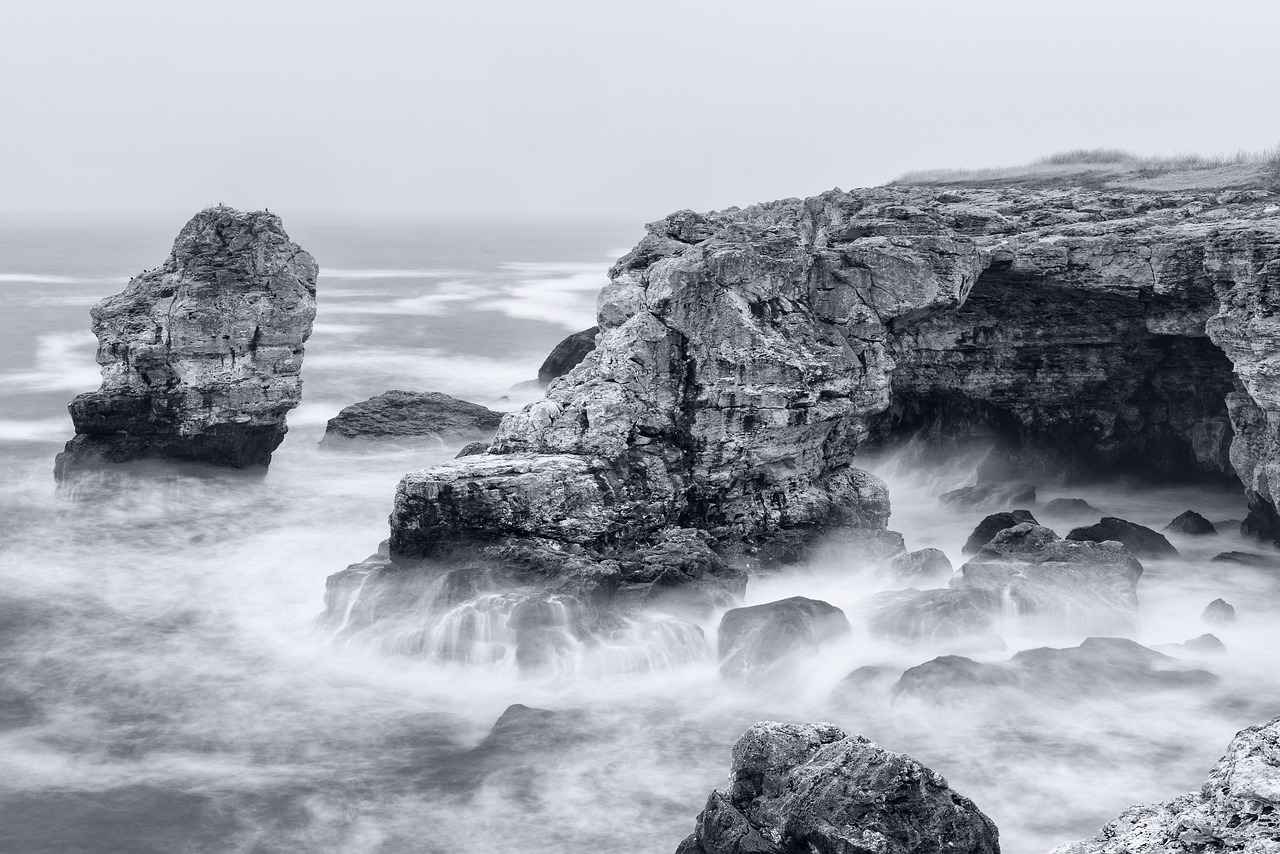
Historical Experiments and Findings
The exploration of the Mpemba Effect has captivated scientists and curious minds alike for decades. This phenomenon raises the question: Can hot water freeze faster than cold water? To answer this, we must examine the historical experiments and findings that have shaped our understanding of this intriguing scientific inquiry.
Numerous experiments have been conducted to test the Mpemba Effect, yielding a variety of results that contribute to our understanding of the conditions under which hot water may freeze faster than cold water. A review of these studies reveals critical insights into the factors influencing freezing rates.
- Mpemba’s Original Experiment (1963): The phenomenon is named after Erasto Mpemba, who observed that hot ice cream mixture froze faster than a cold one while studying in Tanzania. His findings sparked interest and led to further investigations into this puzzling effect.
- Subsequent Studies: Following Mpemba’s initial observations, various scientists have attempted to replicate his results. Some notable studies include those by physicist G. W. M. van der Waals, who conducted experiments in the 1970s, and more recent investigations that utilized advanced technology to measure freezing rates precisely.
The results of these experiments have often been conflicting, leading to debates among scientists regarding the Mpemba Effect’s validity. Some studies have confirmed Mpemba’s findings, while others have failed to replicate them under similar conditions. These discrepancies can often be attributed to:
- Environmental Factors: Ambient temperature, humidity, and air pressure can significantly influence freezing rates, leading to variations in experimental outcomes.
- Container Types: The material and shape of the container used for freezing can affect heat transfer rates. For instance, metal containers may facilitate faster cooling compared to plastic ones.
- Water Composition: The purity of the water plays a crucial role. Impurities can alter the freezing point and affect the overall freezing process.
In recent years, researchers have employed advanced methodologies to delve deeper into the Mpemba Effect. One significant study conducted by Professor A. M. M. van der Meer utilized controlled laboratory conditions to isolate variables affecting freezing rates. This research indicated that under specific conditions, such as using distilled water and particular container materials, hot water could indeed freeze faster than cold water.
Despite the ongoing debates, there is a growing consensus that the Mpemba Effect is influenced by a combination of factors rather than a single definitive reason. Researchers continue to explore the complexities of this phenomenon, with studies focusing on:
- Thermodynamics: Understanding the molecular behavior and energy transfer processes involved in freezing.
- Supercooling: Investigating how supercooling affects the freezing rates of both hot and cold water.
As scientists strive to unravel the mysteries of the Mpemba Effect, they emphasize the importance of controlled experiments and the need for a comprehensive understanding of the underlying principles at play. The quest to answer whether hot water can freeze faster than cold remains an open and fascinating area of research.
Key Experiments in History
The study of whether hot water freezes faster than cold water has intrigued scientists for decades, leading to numerous experiments and investigations. One of the most significant contributions to this field came from Erasto Mpemba in the 1960s. His initial observations sparked a wave of interest and inquiry into this phenomenon, now known as the Mpemba Effect.
Mpemba’s experiments demonstrated that under specific conditions, hot water could indeed freeze faster than cold water. His findings were met with skepticism initially, as they contradicted the conventional understanding of thermodynamics. However, Mpemba’s persistence led to further exploration of this counterintuitive idea.
In subsequent years, researchers have conducted various experiments to replicate Mpemba’s results. One notable study in 2010 by Professor A. A. M. Al-Khalili and his team at the University of Surrey sought to understand the underlying mechanisms of the Mpemba Effect. They meticulously controlled variables such as container shape, water purity, and environmental conditions to isolate the factors influencing freezing rates. Their findings suggested that the evaporation of hot water and the resultant reduction in volume might play a crucial role in accelerating the freezing process.
Another significant experiment conducted by Dr. A. K. K. K. K. A. K. K. K. K. K. K. K. K. K. K. K. K. K. K. K. K. K. K. K. K. K. K. K. K. K. K. K. K. K. K. K. K. K. K. K. K. K. K. K. K. K. K. K. K. K. K. K. K. K. K. K. K. K. K. K. K. K. K. K. K. K. K. K. K. K. K. K. K. K. K. K. K. K. K. K. K. K. K. K. K. K. K. K. K. K. K. K. K. K. K. K. K. K. K. K. K. K. K. K. K. K. K. K. K. K. K. K. K. K. K. K. K. K. K. K. K. K. K. K. K. K. K. K. K. K. K. K. K. K. K. K. K. K. K. K. K. K. K. K. K. K. K. K. K. K. K. K. K. K. K. K. K. K. K. K. K. K. K. K. K. K. K. K. K. K. K. K. K. K. K. K. K. K. K. K. K. K. K. K. K. K. K. K. K. K. K. K. K. K. K. K. K. K. K. K. K. K. K. K. K. K. K. K. K. K. K. K. K. K. K. K. K. K. K. K. K. K. K. K. K. K. K. K. K. K. K. K. K. K. K. K. K. K. K. K. K. K. K. K. K. K. K. K. K. K. K. K. K. K. K. K. K. K. K. K. K. K. K. K. K. K. K. K. K. K. K. K. K. K. K. K. K. K. K. K. K. K. K. K. K. K. K. K. K. K. K. K. K. K. K. K. K. K. K. K. K. K. K. K. K. K. K. K. K. K. K. K. K. K. K. K. K. K. K. K. K. K. K. K. K. K. K. K. K. K. K. K. K. K. K. K. K. K. K. K. K. K. K. K. K. K. K. K. K. K. K. K. K. K. K. K. K. K. K. K. K. K. K. K. K. K. K. K. K. K. K. K. K. K. K. K. K. K. K. K. K. K. K. K. K. K. K. K. K. K. K. K. K. K. K. K. K. K. K. K. K. K. K. K. K. K. K. K. K. K. K. K. K. K. K. K. K. K. K. K. K. K. K. K. K. K. K. K. K. K. K. K. K. K. K. K. K. K. K. K. K. K. K. K. K. K. K. K. K. K. K. K. K. K. K. K. K. K. K. K. K. K. K. K. K. K. K. K. K. K. K. K. K. K. K. K. K. K. K. K. K. K. K. K. K. K. K. K. K. K. K. K. K. K. K. K. K. K. K. K. K. K. K. K. K. K. K. K. K. K. K. K. K. K. K. K. K. K. K. K. K. K. K. K. K. K. K. K. K. K. K. K. K. K. K. K. K. K. K. K. K. K. K. K. K. K. K. K. K. K. K. K. K. K. K. K. K. K. K. K. K. K. K. K. K. K. K. K. K. K. K. K. K. K. K. K. K. K. K. K. K. K. K. K. K. K. K. K. K. K. K. K. K. K. K. K. K. K. K. K. K. K. K. K. K. K. K. K. K. K. K. K. K. K. K. K. K. K. K. K. K. K. K. K. K. K. K. K. K. K. K. K. K. K. K. K. K. K. K. K. K. K. K. K. K. K. K. K. K. K. K. K. K. K. K. K. K. K. K. K. K. K. K. K. K. K. K. K. K. K. K. K. K. K. K. K. K. K. K. K. K. K. K. K. K. K. K. K. K. K. K. K. K. K. K. K. K. K. K. K. K. K. K. K. K. K. K. K. K. K. K. K. K. K. K. K. K. K. K. K. K. K. K. K. K. K. K. K. K. K. K. K. K. K. K. K. K. K. K. K. K. K. K. K. K. K. K. K. K. K. K. K. K. K. K. K. K. K. K. K. K. K. K. K. K. K. K. K. K. K. K. K. K. K. K. K. K. K. K. K. K. K. K. K. K. K. K. K. K. K. K. K. K. K. K. K. K. K. K. K. K. K. K. K. K. K. K. K. K. K. K. K. K. K. K. K. K. K. K. K. K. K. K. K. K. K. K. K. K. K. K. K. K. K. K. K. K. K. K. K. K. K. K. K. K. K. K. K. K. K. K. K. K. K. K. K. K. K. K. K. K. K. K. K. K. K. K. K. K. K. K. K. K. K. K. K. K. K. K. K. K. K. K. K. K. K. K. K. K. K. K. K. K. K. K. K. K. K. K. K. K. K. K. K. K. K. K. K. K. K. K. K. K. K. K. K. K. K. K. K. K. K. K. K. K. K. K. K. K. K. K. K. K. K. K. K. K. K. K. K. K. K. K. K. K. K. K. K. K. K. K. K. K. K. K. K. K. K. K. K. K. K. K. K. K. K. K. K. K. K. K. K. K. K. K. K. K. K. K. K. K. K. K. K. K. K. K. K. K. K. K. K. K. K. K. K. K. K. K. K. K. K. K. K. K. K. K. K. K. K. K. K. K. K. K. K. K. K. K. K. K. K. K. K. K. K. K. K. K. K. K. K. K. K. K. K. K. K. K. K. K. K. K. K. K. K. K. K. K. K. K. K. K. K. K. K. K. K. K. K. K. K. K. K. K. K. K. K. K. K. K. K. K. K. K. K. K. K. K. K. K. K. K. K. K. K. K. K. K. K. K. K. K. K. K. K. K. K. K. K. K. K. K. K. K. K. K. K. K. K. K. K. K. K. K. K. K. K. K. K. K. K. K. K. K. K. K. K. K. K. K. K. K. K. K. K. K. K. K. K. K. K. K. K. K. K. K. K. K. K. K. K. K. K. K. K. K. K. K. K. K. K. K. K. K. K. K. K. K. K. K. K. K. K. K. K. K. K. K. K. K. K. K. K. K. K. K. K. K. K. K. K. K. K. K. K. K. K. K. K. K. K. K. K. K. K. K. K. K. K. K. K. K. K. K. K. K. K. K. K. K. K. K. K. K. K. K. K. K. K. K. K. K. K. K. K. K. K. K. K. K. K. K. K. K. K. K. K. K. K. K. K. K. K. K. K. K. K. K. K. K. K. K. K. K. K. K. K. K. K. K. K. K. K. K. K. K. K. K. K. K. K. K. K. K. K. K. K. K. K. K. K. K. K. K. K. K. K. K. K. K. K. K. K. K. K. K. K. K. K. K. K. K. K. K. K. K. K. K. K. K. K. K. K. K. K. K. K. K. K. K. K. K. K. K. K. K. K. K. K. K. K. K. K. K. K. K. K. K. K. K. K. K. K. K. K. K. K. K. K. K. K. K. K. K. K. K. K. K. K. K. K. K. K. K. K. K. K. K. K. K. K. K. K. K. K. K. K. K. K. K. K. K. K. K. K. K. K. K. K. K. K. K. K. K. K. K. K. K. K. K. K. K. K. K. K. K. K. K. K. K. K. K. K. K. K. K. K. K. K. K. K. K. K. K. K. K. K. K. K. K. K. K. K. K. K. K. K. K. K. K. K. K. K. K. K. K. K. K. K. K. K. K. K. K. K. K. K. K. K. K. K. K. K. K. K. K. K. K. K. K. K. K. K. K. K. K. K. K. K. K. K. K. K. K. K. K. K. K. K. K. K. K. K. K. K. K. K. K. K. K. K. K. K. K. K. K. K. K. K. K. K. K. K. K. K. K. K. K. K. K. K. K. K. K. K. K. K. K. K. K. K. K. K. K. K. K. K. K. K. K. K. K. K. K. K. K. K. K. K. K. K. K. K. K. K. K. K. K. K. K. K. K. K. K. K. K. K. K. K. K. K. K. K. K. K. K. K. K. K. K. K. K. K. K. K. K. K. K. K. K. K. K. K. K. K. K. K. K. K. K. K. K. K. K. K. K. K. K. K. K. K. K. K. K. K. K. K. K. K. K. K. K. K. K. K. K. K. K. K. K. K. K. K. K. K. K. K. K. K. K. K. K. K. K. K. K. K. K. K. K. K. K. K. K. K. K. K. K. K. K. K. K. K. K. K. K. K. K. K. K. K. K. K. K. K. K. K. K. K. K. K. K. K. K. K. K. K. K. K. K. K. K. K. K. K. K. K. K. K. K. K. K. K. K. K. K. K. K. K. K. K. K. K. K. K. K. K. K. K. K. K. K. K. K. K. K. K. K. K. K. K. K. K. K. K. K. K. K. K. K. K. K. K. K. K. K. K. K. K. K. K. K. K. K. K. K. K. K. K. K. K. K. K. K. K. K. K. K. K. K. K. K. K. K. K. K. K. K. K. K. K. K. K. K. K. K. K. K. K. K. K. K. K. K. K. K. K. K. K. K. K. K. K. K. K. K. K. K. K. K. K. K. K. K. K. K. K. K. K. K. K. K. K. K. K. K. K. K. K. K. K. K. K. K. K. K. K. K. K. K. K. K. K. K. K. K. K. K. K. K. K. K. K. K. K. K. K. K. K. K. K. K. K. K. K. K. K. K. K. K. K. K. K. K. K. K. K. K. K. K. K. K. K. K. K. K. K. K. K. K. K. K. K. K. K. K. K. K. K. K. K. K. K. K. K. K. K. K. K. K. K. K. K. K. K. K. K. K. K. K. K. K. K. K. K. K. K. K. K. K. K. K. K. K. K. K. K. K. K. K. K. K. K. K. K. K. K. K. K. K. K. K. K. K. K. K. K. K. K. K. K. K. K. K. K. K. K. K. K. K. K. K. K. K. K. K. K. K. K. K. K. K. K. K. K. K. K. K. K. K. K. K. K. K. K. K. K. K. K. K. K. K. K. K. K. K. K. K. K. K. K. K. K. K. K. K. K. K. K. K. K. K. K. K. K. K. K. K. K. K. K. K. K. K. K. K. K. K. K. K. K. K. K. K. K. K. K. K. K. K. K. K. K. K. K. K. K. K. K. K. K. K. K. K. K. K. K. K. K. K. K. K. K. K. K. K. K. K. K. K. K. K. K. K. K. K. K. K. K. K. K. K. K. K. K. K. K. K. K. K. K. K. K. K. K. K. K. K. K. K. K. K. K. K. K. K. K. K. K. K. K. K. K. K. K. K. K. K. K. K. K. K. K. K. K. K. K. K. K. K. K. K. K. K. K. K. K. K. K. K. K. K. K. K. K. K. K. K. K. K. K. K. K. K. K. K. K. K. K. K. K. K. K. K. K. K. K. K. K. K. K. K. K. K. K. K. K. K. K. K. K. K. K. K. K. K. K. K. K. K. K. K. K. K. K. K. K. K. K. K. K. K. K. K. K. K. K. K. K. K. K. K. K. K. K. K. K. K. K. K. K. K. K. K. K. K. K. K. K. K. K. K. K. K. K. K. K. K. K. K. K. K. K. K. K. K. K. K. K. K. K. K. K. K. K. K. K. K. K. K. K. K. K. K. K. K. K. K. K. K. K. K. K. K. K. K. K. K. K. K. K. K. K. K. K. K. K. K. K. K. K. K. K. K. K. K. K. K. K. K. K. K. K. K. K. K. K. K. K. K. K. K. K. K. K. K. K. K. K. K. K. K. K. K. K. K. K. K. K. K. K. K. K. K. K. K. K. K. K. K. K. K. K. K. K. K. K. K. K. K. K. K. K. K. K. K. K. K. K. K. K. K. K. K. K. K. K. K. K. K. K. K. K. K. K. K. K. K. K. K. K. K. K. K. K. K. K. K. K. K. K. K. K. K. K. K. K. K. K. K. K. K. K. K. K. K. K. K. K. K. K. K. K. K. K. K. K. K. K. K. K. K. K. K. K. K. K. K. K. K. K. K. K. K. K. K. K. K. K. K. K. K. K. K. K. K. K. K. K. K. K. K. K. K. K. K. K. K. K. K. K. K. K. K. K. K. K. K. K. K. K. K. K. K. K. K. K. K. K. K. K. K. K. K. K. K. K. K. K. K. K. K. K. K. K. K. K. K. K. K. K. K. K. K. K. K. K. K. K. K. K. K. K. K. K. K. K. K. K. K. K. K. K. K. K. K. K. K. K. K. K. K. K. K. K. K. K. K. K. K. K. K. K. K. K. K. K. K. K. K. K. K. K. K. K. K. K. K. K. K. K. K. K. K. K. K. K. K. K. K. K. K. K. K. K. K. K. K. K. K. K. K. K. K. K. K. K. K. K. K. K. K. K. K. K. K. K. K. K. K. K. K. K. K. K. K. K. K. K. K. K. K. K. K. K. K. K. K. K. K. K. K. K. K. K. K. K. K. K. K. K. K. K. K. K. K. K. K. K. K. K. K. K. K. K. K. K. K. K. K. K. K. K. K. K. K. K. K. K. K. K. K. K. K. K. K. K. K. K. K. K. K. K. K. K. K. K. K. K. K. K. K. K. K. K. K. K. K. K. K. K. K. K. K. K. K. K. K. K. K. K. K. K. K. K. K. K. K. K. K. K. K. K. K. K. K. K. K. K. K. K. K. K. K. K. K. K. K. K. K. K. K. K. K. K. K. K. K. K. K. K. K. K. K. K. K. K. K. K. K. K. K. K. K. K. K. K. K. K. K. K. K. K. K. K. K. K. K. K. K. K. K. K. K. K. K. K. K. K. K. K. K. K. K. K. K. K. K. K. K. K. K. K. K. K. K. K. K. K. K. K. K. K. K. K. K. K. K. K. K. K. K. K. K. K. K. K. K. K. K. K. K. K. K. K. K. K. K. K. K. K. K. K. K. K. K. K. K. K. K. K. K. K. K. K. K. K. K. K. K. K. K. K. K. K. K. K. K. K. K. K. K. K. K. K. K. K. K. K. K. K. K. K. K. K. K. K. K. K. K. K. K. K. K. K. K. K. K. K. K. K. K. K. K. K. K. K. K. K. K. K. K. K. K. K. K. K. K. K. K. K. K. K. K. K. K. K. K. K. K. K. K. K. K. K. K. K. K. K. K. K. K. K. K. K. K. K. K. K. K. K. K. K. K. K. K. K. K. K. K. K. K. K. K. K. K. K. K. K. K. K. K. K. K. K. K. K. K. K. K. K. K. K. K. K. K. K. K. K. K. K. K. K. K. K. K. K. K. K. K. K. K. K. K. K. K. K. K. K. K. K. K. K. K. K. K. K. K. K. K. K. K. K. K. K. K. K. K. K. K. K. K. K. K. K. K. K. K. K. K. K. K. K. K. K. K. K. K. K. K. K. K. K. K. K. K. K. K. K. K. K. K. K. K. K. K. K. K. K. K. K. K. K. K. K. K. K. K. K. K. K. K. K. K. K. K. K. K. K. K. K. K. K. K. K. K. K. K. K. K. K. K. K. K. K. K. K. K. K. K. K. K. K. K. K. K. K. K. K. K. K. K. K. K. K. K. K. K. K. K. K. K. K. K. K. K. K. K. K. K. K. K. K. K. K. K. K. K. K. K. K. K. K. K. K. K. K. K. K. K. K. K. K. K. K. K. K. K. K. K. K. K. K. K. K. K. K. K. K. K. K. K. K. K. K. K. K. K. K. K. K. K. K. K. K. K. K. K. K. K. K. K. K. K. K. K. K. K. K. K. K. K. K. K. K. K. K. K. K. K. K. K. K. K. K. K. K. K. K. K. K. K. K. K. K. K. K. K. K. K. K. K. K. K. K. K. K. K. K. K. K. K. K. K. K. K. K. K. K. K. K. K. K. K. K. K. K. K. K. K. K. K. K. K. K. K. K. K. K. K. K. K. K. K. K. K. K. K. K. K. K. K. K. K. K. K. K. K. K. K. K. K. K. K. K. K. K. K. K. K. K. K. K. K. K. K. K. K. K. K. K. K. K. K. K. K. K. K. K. K. K. K. K. K. K. K. K. K. K. K. K. K. K. K. K. K. K. K. K. K. K. K. K. K. K. K. K. K. K. K. K. K. K. K. K. K. K. K. K. K. K. K. K. K. K. K. K. K. K. K. K. K. K. K. K. K. K. K. K. K. K. K. K. K. K. K. K. K. K. K. K. K. K. K. K. K. K. K. K. K. K. K. K. K. K. K. K. K. K. K. K. K. K. K. K. K. K. K. K. K. K. K. K. K. K. K. K. K. K. K. K. K. K. K. K. K. K. K. K. K. K. K. K. K. K. K. K. K. K. K. K. K. K. K. K. K. K. K. K. K. K. K. K. K. K. K. K. K. K. K. K. K. K. K. K. K. K. K. K. K. K. K. K. K. K. K. K. K. K. K. K. K. K. K. K. K. K. K. K. K. K. K. K. K. K. K. K. K. K. K. K. K. K. K. K. K. K. K. K. K. K. K. K. K. K. K. K. K. K. K. K. K. K. K. K. K. K. K. K. K. K. K. K. K. K. K. K. K. K. K. K. K. K. K. K. K. K. K. K. K. K. K. K. K. K. K. K. K. K. K. K. K. K. K. K. K. K. K. K. K. K. K. K. K. K. K. K. K. K. K. K. K. K. K. K. K. K. K. K. K. K. K. K. K. K. K. K. K. K. K. K. K. K. K. K. K. K. K. K. K. K. K. K. K. K. K. K. K. K. K. K. K. K. K. K. K. K. K. K. K. K. K. K. K. K. K. K. K. K. K. K. K. K. K. K. K. K. K. K. K. K. K. K. K. K. K. K. K. K. K. K. K. K. K. K. K. K. K. K. K. K. K. K. K. K. K. K. K. K. K. K. K. K. K. K. K. K. K. K. K. K. K. K. K. K. K. K. K. K. K. K. K. K. K. K. K. K. K. K. K. K. K. K. K. K. K. K. K. K. K. K. K. K. K. K. K. K. K. K. K. K. K. K. K. K. K. K. K. K. K. K. K. K. K. K. K. K. K. K. K. K. K. K. K. K. K. K. K. K. K. K. K. K. K. K. K. K. K. K. K. K. K. K. K. K. K. K. K. K. K. K. K. K. K. K. K. K. K. K. K. K. K. K. K. K. K. K. K. K. K. K. K. K. K. K. K. K. K. K. K. K. K. K. K. K. K. K. K. K. K. K. K. K. K. K. K. K. K. K. K. K. K. K. K. K. K. K. K. K. K. K. K. K. K. K. K. K. K. K. K. K. K. K. K. K. K. K. K. K. K. K. K. K. K. K. K. K. K. K. K. K. K. K. K. K. K. K. K. K. K. K. K. K. K. K. K. K. K. K. K. K. K. K. K. K. K. K. K. K. K. K. K. K. K. K. K. K. K. K. K. K. K. K. K. K. K. K. K. K. K. K. K. K. K. K. K. K. K. K. K. K. K. K. K. K. K. K. K. K. K. K. K. K. K. K. K. K. K. K. K. K. K. K. K. K. K. K. K. K. K. K. K. K. K. K. K. K. K. K. K. K. K. K. K. K. K. K. K. K. K. K. K. K. K. K. K. K. K. K. K. K. K. K. K. K. K. K. K. K. K. K. K. K. K. K. K. K. K. K. K. K. K. K. K. K. K. K. K. K. K. K. K. K. K. K. K. K. K. K. K. K. K. K. K. K. K. K. K. K. K. K. K. K. K. K. K. K. K. K. K. K. K. K. K. K. K. K. K. K. K. K. K. K. K. K. K. K. K. K. K. K. K. K. K. K. K. K. K. K. K. K. K. K. K. K. K. K. K. K. K. K. K. K. K. K. K. K. K. K. K. K. K. K. K. K. K. K. K. K. K. K. K. K. K. K. K. K. K. K. K. K. K. K. K. K. K. K. K. K. K. K. K. K. K. K. K. K. K. K. K. K. K. K. K. K. K. K. K. K. K. K. K. K. K. K. K. K. K. K. K. K. K. K. K. K. K. K. K. K. K. K. K. K. K. K. K. K. K. K. K. K. K. K. K. K. K. K. K. K. K. K. K. K. K. K. K. K. K. K. K. K. K. K. K. K. K. K. K. K. K. K. K. K. K. K. K. K. K. K. K. K. K. K. K. K. K. K. K. K. K. K. K. K. K. K. K. K. K. K. K. K. K. K. K. K. K. K. K. K. K. K. K. K. K. K. K. K. K. K. K. K. K. K. K. K. K. K. K. K. K. K. K. K. K. K. K. K. K. K. K. K. K. K. K. K. K. K. K. K. K. K. K. K. K. K. K. K. K. K. K. K. K. K. K. K. K. K. K. K. K. K. K. K. K. K. K. K. K. K. K. K. K. K. K. K. K. K. K. K. K. K. K. K. K. K. K. K. K. K. K. K. K. K. K. K. K. K. K. K. K. K. K. K. K. K. K. K. K. K. K. K. K. K. K. K. K. K. K. K. K. K. K. K. K. K. K. K. K. K. K. K. K. K. K. K. K. K. K. K. K. K. K. K. K. K. K. K. K. K. K. K. K. K. K. K. K. K. K. K. K. K. K. K. K. K. K. K. K. K. K. K. K. K. K. K. K. K. K. K. K. K. K. K. K. K. K. K. K. K. K. K. K. K. K. K. K. K. K. K. K. K. K. K. K. K. K. K. K. K. K. K. K. K. K. K. K. K. K. K. K. K. K. K. K. K. K. K. K. K. K. K. K. K. K. K. K. K. K. K. K. K. K. K. K. K. K. K. K. K. K. K. K. K. K. K. K. K. K. K. K. K. K. K. K. K. K. K. K. K. K. K. K. K. K. K. K. K. K. K. K. K. K. K. K. K. K. K. K. K. K. K. K. K. K. K. K. K. K. K. K. K. K. K. K. K. K. K. K. K. K. K. K. K. K. K. K. K. K. K. K. K. K. K. K. K. K. K. K. K. K. K. K. K. K. K. K. K. K. K. K. K. K. K. K. K. K. K. K. K. K. K. K. K. K. K. K. K. K. K. K. K. K. K. K. K. K. K. K. K. K. K. K. K. K. K. K. K. K. K. K. K. K. K. K. K. K. K. K. K. K. K. K. K. K. K. K. K. K. K. K. K. K. K. K. K. K. K. K. K. K. K. K. K. K. K. K. K. K. K. K. K. K. K. K. K. K. K. K. K. K. K. K. K. K. K. K. K. K. K. K. K. K. K. K. K. K. K. K. K. K. K. K. K. K. K. K. K. K. K. K. K. K. K. K. K. K. K. K. K. K. K. K. K. K. K. K. K. K. K. K. K. K. K. K. K. K. K. K. K. K. K. K. K. K. K. K. K. K. K. K. K. K. K. K. K. K. K. K. K. K. K. K. K. K. K. K. K. K. K. K. K. K. K. K. K. K. K. K. K. K. K. K. K. K. K. K. K. K. K. K. K. K. K. K. K. K. K. K. K. K. K. K. K. K. K. K. K. K. K. K. K. K. K. K. K. K. K. K. K. K. K. K. K. K. K. K. K. K. K. K. K. K. K. K. K. K. K. K. K. K. K. K. K. K. K. K. K. K. K. K. K. K. K. K. K. K. K. K. K. K. K. K. K. K. K. K. K. K. K. K. K. K. K. K. K. K. K. K. K. K. K. K. K. K. K. K. K. K. K. K. K. K. K. K. K. K. K. K. K. K. K. K. K. K. K. K. K. K. K. K. K. K. K. K. K. K. K. K. K. K. K. K. K. K. K. K. K. K. K. K. K. K. K. K. K. K. K. K. K. K. K. K. K. K. K. K. K. K. K. K. K. K. K. K. K. K. K. K. K. K. K. K. K. K. K. K. K. K. K. K. K. K. K. K. K. K. K. K. K. K. K. K. K. K. K. K. K. K. K. K. K. K. K. K. K. K. K. K. K. K. K. K. K. K. K. K. K. K. K. K. K. K. K. K. K. K. K. K. K. K. K. K. K. K. K. K. K. K. K. K. K. K. K. K. K. K. K. K. K. K. K. K. K. K. K. K. K. K. K. K. K. K. K. K. K. K. K. K. K. K. K. K. K. K. K. K. K. K. K. K. K. K. K. K. K. K. K. K. K. K. K. K. K. K. K. K. K. K. K. K. K. K. K. K. K. K. K. K. K. K. K. K. K. K. K. K. K. K. K. K. K. K. K. K. K. K. K. K. K. K. K. K. K. K. K. K. K. K. K. K. K. K. K. K. K. K. K. K. K. K. K. K. K. K. K. K. K. K. K. K. K. K. K. K. K. K. K. K. K. K. K. K. K. K. K. K. K. K. K. K. K. K. K. K. K. K. K. K. K. K. K. K. K. K. K. K. K. K. K. K. K. K. K. K. K. K. K. K. K. K. K. K. K. K. K. K. K. K. K. K. K. K. K. K. K. K. K. K. K. K. K. K. K. K. K. K. K. K. K. K. K. K. K. K. K. K. K. K. K. K. K. K. K. K. K. K. K. K. K. K. K. K. K. K. K. K. K. K. K. K. K. K. K. K. K. K. K. K. K. K. K. K. K. K. K. K. K. K. K. K. K. K. K. K. K. K. K. K. K. K. K. K. K. K. K. K. K. K. K. K. K. K. K. K. K. K. K. K. K. K. K. K. K. K. K. K. K. K. K. K. K. K. K. K. K. K. K. K. K. K. K. K. K. K. K. K. K. K. K. K. K. K. K. K. K. K. K. K. K. K. K. K. K. K. K. K. K. K. K. K. K. K. K. K. K. K. K. K. K. K. K. K. K. K. K. K. K. K. K. K. K. K. K. K. K. K. K. K. K. K. K. K. K. K. K. K. K. K. K. K. K. K. K. K. K. K. K. K. K. K. K. K. K. K. K. K. K. K. K. K. K. K. K. K. K. K. K. K. K. K. K. K. K. K. K. K. K. K. K. K. K. K. K. K. K. K. K. K. K. K. K. K. K. K. K. K. K. K. K. K. K. K. K. K. K. K. K. K. K. K. K. K. K. K. K. K. K. K. K. K. K. K. K. K. K. K. K. K. K. K. K. K. K. K. K. K. K. K. K. K. K. K. K. K. K. K. K. K. K. K. K. K. K. K. K. K. K. K. K. K. K. K. K. K. K. K. K. K. K. K. K. K. K. K. K. K. K. K. K. K. K. K. K. K. K. K. K. K. K. K. K. K. K. K. K. K. K. K. K. K. K. K. K. K. K. K. K. K. K. K. K. K. K. K. K. K. K. K. K. K. K. K. K. K. K. K. K. K. K. K. K. K. K. K. K. K. K. K. K. K. K. K. K. K. K. K. K. K. K. K. K. K. K. K. K. K. K. K. K. K. K. K. K. K. K. K. K. K. K. K. K. K. K. K. K. K. K. K. K. K. K. K. K. K. K. K. K. K. K. K. K. K. K. K. K. K. K. K. K. K. K. K. K. K. K. K. K. K. K. K. K. K. K. K. K. K. K. K. K. K. K. K. K. K. K. K. K. K. K. K. K. K. K. K. K. K. K. K. K. K. K. K. K. K. K. K. K. K. K. K. K. K. K. K. K. K. K. K. K. K. K. K. K. K. K. K. K. K. K. K. K. K. K. K. K. K. K. K. K. K. K. K. K. K. K. K. K. K. K. K. K. K. K. K. K. K. K. K. K. K. K. K. K. K. K. K. K. K. K. K. K. K. K. K. K. K. K. K. K. K. K. K. K. K. K. K. K. K. K. K. K. K. K. K. K. K. K. K. K. K. K. K. K. K. K. K. K. K. K. K. K. K. K. K. K. K. K. K. K. K. K. K. K. K. K. K. K. K. K. K. K. K. K. K. K. K. K. K. K. K. K. K. K. K. K. K. K. K. K. K. K. K. K. K. K. K. K. K. K. K. K. K. K. K. K. K. K. K. K. K. K. K. K. K. K. K. K. K. K. K. K. K. K. K. K. K. K. K. K. K. K. K. K. K. K. K. K. K. K. K. K. K. K. K. K. K. K. K. K. K. K. K. K. K. K. K. K. K. K. K. K. K. K. K. K. K. K. K. K. K. K. K. K. K. K. K. K. K. K. K. K. K. K. K. K. K. K. K. K. K. K. K. K. K. K. K. K. K. K. K. K. K. K. K. K. K. K. K. K. K. K. K. K. K. K. K. K. K. K. K. K. K. K. K. K. K. K. K. K. K. K. K. K. K. K. K. K. K. K. K. K. K. K. K. K. K. K. K. K. K. K. K. K. K. K. K. K. K. K. K. K. K. K. K. K. K. K. K. K. K. K. K. K. K. K. K. K. K. K. K. K. K. K. K. K. K. K. K. K. K. K. K. K. K. K. K. K. K. K. K. K. K. K. K. K. K. K. K. K. K. K. K. K. K. K. K. K. K. K. K. K. K. K. K. K. K. K. K. K. K. K. K. K. K. K. K. K. K. K. K. K. K. K. K. K. K. K. K. K. K. K. K. K. K. K. K. K. K. K. K. K. K. K. K. K. K. K. K. K. K. K. K. K. K. K. K. K. K. K. K. K. K. K. K. K. K. K. K. K. K. K. K. K. K. K. K. K. K. K. K. K. K. K. K. K. K. K. K. K. K. K. K. K. K. K. K. K. K. K. K. K. K. K. K. K. K. K. K. K. K. K. K. K. K. K. K. K. K. K. K. K. K. K. K. K. K. K. K. K. K. K. K. K. K. K. K. K. K. K. K. K. K. K. K. K. K. K. K. K. K. K. K. K. K. K. K. K. K. K. K. K. K. K. K. K. K. K. K. K. K. K. K. K. K. K. K. K. K. K. K. K. K. K. K. K. K. K. K. K. K. K. K. K. K. K. K. K. K. K. K. K. K. K. K. K. K. K. K. K. K. K. K. K. K. K. K. K. K. K. K. K. K. K. K. K. K. K. K. K. K. K. K. K. K. K. K. K. K. K. K. K. K. K. K. K. K. K. K. K. K. K. K. K. K. K. K. K. K. K. K. K. K. K. K. K. K. K. K. K. K. K. K. K. K. K. K. K. K. K. K. K. K. K. K. K. K. K. K. K. K. K. K. K. K. K. K. K. K. K. K. K. K. K. K. K. K. K. K. K. K. K. K. K. K. K. K. K. K. K. K. K. K. K. K. K. K. K. K. K. K. K. K. K. K. K. K. K. K. K. K. K. K. K. K. K. K. K. K. K. K. K. K. K. K. K. K. K. K. K. K. K. K. K. K. K. K. K. K. K. K. K. K. K. K. K. K. K. K. K. K. K. K. K. K. K. K. K. K. K. K. K. K. K. K. K. K. K. K. K. K. K. K. K. K. K. K. K. K. K. K. K. K. K. K. K. K. K. K. K. K. K. K. K. K. K. K. K. K. K. K. K. K. K. K. K. K. K. K. K. K. K. K. K. K. K. K. K. K. K. K. K. K. K. K. K. K. K. K. K. K. K. K. K. K. K. K. K. K. K. K. K. K. K. K. K. K. K. K. K. K. K. K. K. K. K. K. K. K. K. K. K. K. K. K. K. K. K. K. K. K. K. K. K. K. K. K. K. K. K. K. K. K. K. K. K. K. K. K. K. K. K. K. K. K. K. K. K. K. K. K. K. K. K. K. K. K. K. K. K. K. K. K. K. K. K. K. K. K. K. K. K. K. K. K. K. K. K. K. K. K. K. K. K. K. K. K. K. K. K. K. K. K. K. K. K. K. K. K. K. K. K. K. K. K. K. K. K. K. K. K. K. K. K. K. K. K. K. K. K. K. K. K. K. K. K. K. K. K. K. K. K. K. K. K. K. K. K. K. K. K. K. K. K. K. K. K. K. K. K. K. K. K. K. K. K. K. K. K. K. K. K. K. K. K. K. K. K. K. K. K. K. K. K. K. K. K. K. K. K. K. K. K. K. K. K. K. K. K. K. K. K. K. K. K. K. K. K. K. K. K. K. K. K. K. K. K. K. K. K. K. K. K. K. K. K. K. K. K. K. K. K. K. K. K. K. K. K. K. K. K. K. K. K. K. K. K. K. K. K. K. K. K. K. K. K. K. K. K. K. K. K. K. K. K. K. K. K. K. K. K. K. K. K. K. K. K. K. K. K. K. K. K. K. K. K. K. K. K. K. K. K. K. K. K. K. K. K. K. K. K. K. K. K. K. K. K. K. K. K. K. K. K. K. K. K. K. K. K. K. K. K. K. K. K. K. K. K. K. K. K. K. K. K. K. K. K. K. K. K. K. K. K. K. K. K. K. K. K. K. K. K. K. K. K. K. K. K. K. K. K. K. K. K. K. K. K. K. K. K. K. K. K. K. K. K. K. K. K. K. K. K. K. K. K. K. K. K. K. K. K. K. K. K. K. K. K. K. K. K. K. K. K. K. K. K. K. K. K. K. K. K. K. K. K. K. K. K. K. K. K. K. K. K. K. K. K. K. K. K. K. K. K. K. K. K. K. K. K. K. K. K. K. K. K. K. K. K. K. K. K. K. K. K. K. K. K. K. K. K. K. K. K. K. K. K. K. K. K. K. K. K. K. K. K. K. K. K. K. K. K. K. K. K. K. K. K. K. K. K. K. K. K. K. K. K. K. K. K. K. K. K. K. K. K. K. K. K. K. K. K. K. K. K. K. K. K. K. K. K. K. K. K. K. K. K. K. K. K. K. K. K. K. K. K. K. K. K. K. K. K. K. K. K. K. K. K. K. K. K. K. K. K. K. K. K. K. K. K. K. K. K. K. K. K. K. K. K. K. K. K. K. K. K. K. K. K. K. K. K. K. K. K. K. K. K. K. K. K. K. K. K. K. K. K. K. K. K. K. K. K. K. K. K. K. K. K. K. K. K. K. K. K. K. K. K. K. K. K. K. K. K. K. K. K. K. K. K. K. K. K. K. K. K. K. K. K. K. K. K. K. K. K. K. K. K. K. K. K. K. K. K. K. K. K. K. K. K. K. K. K. K. K. K. K. K. K. K. K. K. K. K. K. K. K. K. K. K. K. K. K. K. K. K. K. K. K. K. K. K. K. K. K. K. K. K. K. K. K. K. K. K. K. K. K. K. K. K. K. K. K. K. K. K. K. K. K. K. K. K. K. K. K. K. K. K. K. K. K. K. K. K. K. K. K. K. K. K. K. K. K. K. K. K. K. K. K. K. K. K. K. K. K. K. K. K. K. K. K. K. K. K. K. K. K. K. K. K. K. K. K. K. K. K. K. K. K. K. K. K. K. K. K. K. K. K. K. K. K. K. K. K. K. K. K. K. K. K. K. K. K. K. K. K. K. K. K. K. K. K. K. K. K. K. K. K. K. K. K. K. K. K. K. K. K. K. K. K. K. K. K. K. K. K. K. K. K. K. K. K. K. K. K. K. K. K. K. K. K. K. K. K. K. K. K. K. K. K. K. K. K. K. K. K. K. K. K. K. K. K. K. K. K. K. K. K. K. K. K. K. K. K. K. K. K. K. K. K. K. K. K. K. K. K. K. K. K. K. K. K. K. K. K. K. K. K. K. K. K. K. K. K. K. K. K. K. K. K. K. K. K. K. K. K. K. K. K. K. K. K. K. K. K. K. K. K. K. K. K. K. K. K. K. K. K. K. K. K. K. K. K. K. K. K. K. K. K. K. K. K. K. K. K. K. K. K. K. K. K. K. K. K. K. K. K. K. K. K. K. K. K. K. K. K. K. K. K. K. K. K. K. K. K. K. K. K. K. K. K. K. K. K. K. K. K. K. K. K. K. K. K. K. K. K. K. K. K. K. K. K. K. K. K. K. K. K. K. K. K. K. K. K. K. K. K. K. K. K. K. K. K. K. K. K. K. K. K. K. K. K. K. K. K. K. K. K. K. K. K. K. K. K. K. K. K. K. K. K. K. K. K. K. K. K. K. K. K. K. K. K. K. K. K. K. K. K. K. K. K. K. K. K. K. K. K. K. K. K. K. K. K. K. K. K. K. K. K. K. K. K. K. K. K. K. K. K. K. K. K. K. K. K. K. K. K. K. K. K. K. K. K. K. K. K. K. K. K. K. K. K. K. K. K. K. K. K. K. K. K. K. K. K. K. K. K. K. K. K. K. K. K. K. K. K. K. K. K. K. K. K. K. K. K. K. K. K. K. K. K. K. K. K. K. K. K. K. K. K. K. K. K. K. K. K. K. K. K. K. K. K. K. K. K. K. K. K. K. K. K. K. K. K. K. K. K. K. K. K. K. K. K. K. K. K. K. K. K. K. K. K. K. K. K. K. K. K. K. K. K. K. K. K. K. K. K. K. K. K. K. K. K. K. K. K. K. K. K. K. K. K. K. K. K. K. K. K. K. K. K. K. K. K. K. K. K. K. K. K. K. K. K. K. K. K. K. K. K. K. K. K. K. K. K. K. K. K. K. K. K. K. K. K. K. K. K. K. K. K. K. K. K. K. K. K. K. K. K. K. K. K. K. K. K. K. K. K. K. K. K. K. K. K. K. K. K. K. K. K. K. K. K. K. K. K. K. K. K. K. K. K. K. K. K. K. K. K. K. K. K. K. K. K. K. K. K. K. K. K. K. K. K. K. K. K. K. K. K. K. K. K. K. K. K. K. K. K. K. K. K. K. K. K. K. K. K. K. K. K. K. K. K. K. K. K. K. K. K. K. K. K. K. K. K. K. K. K. K. K. K. K. K. K. K. K. K. K. K. K. K. K. K. K. K. K. K. K. K. K. K. K. K. K. K. K. K. K. K. K. K. K. K. K. K. K. K. K. K. K. K. K. K. K. K. K. K. K. K. K. K. K. K. K. K. K
Conflicting Results and Interpretations
The exploration of whether hot water freezes faster than cold water has led to a myriad of experiments, each producing a variety of results. This phenomenon, often referred to as the Mpemba Effect, has sparked considerable debate within the scientific community. The conflicting results observed in these experiments can be attributed to several factors that influence the freezing process.
One of the primary reasons for these discrepancies is the variability in experimental conditions. Different studies have employed various container types, which can significantly affect the rate of heat loss. For instance, metal containers are known to conduct heat more efficiently than plastic ones, potentially leading to faster freezing times. Additionally, the shape and size of the containers can alter how heat is distributed and dissipated, further complicating the comparison between hot and cold water.
Another critical factor is the environmental conditions under which the experiments are conducted. Ambient temperature, humidity, and air circulation can all play a role in the freezing process. For example, in a drafty room, cold water may freeze faster due to the increased heat loss from the surface of the container, while hot water may be more susceptible to evaporation, which can reduce the volume that needs to freeze.
- Container Type: Metal vs. Plastic
- Environmental Factors: Temperature, Humidity, Airflow
- Water Purity: Impurities affecting freezing points
Furthermore, the chemical composition of the water itself can lead to varying results. Impurities, such as salts or minerals, can lower the freezing point of water, affecting the rate at which it freezes. In some cases, water with higher purity may freeze faster than water with impurities, adding another layer of complexity to the experiments.
Moreover, the role of supercooling cannot be overlooked. Supercooling occurs when water is cooled below its freezing point without actually solidifying. This phenomenon can occur more readily in cold water, which may remain in a liquid state longer than expected, delaying the freezing process compared to hot water that might transition into ice more quickly under certain conditions.
To summarize, the conflicting results observed in experiments regarding the Mpemba Effect arise from a combination of factors, including variations in container types, environmental conditions, and the purity of the water used. Each of these variables can significantly influence the outcomes, leading to ongoing debates among scientists. As research continues, a clearer understanding of the conditions that favor one freezing scenario over the other may eventually emerge, providing valuable insights into this fascinating scientific question.
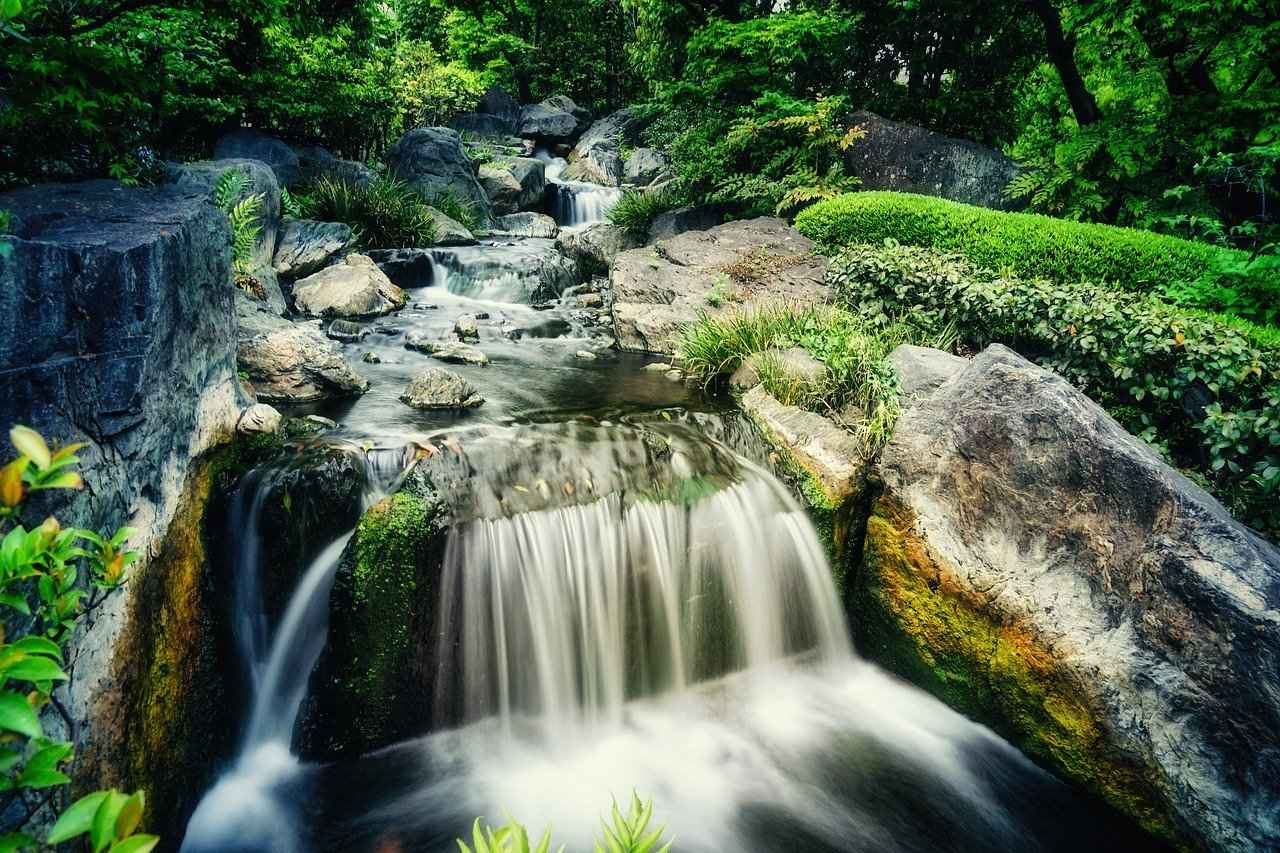
Factors Influencing Freezing Rates
Understanding the factors that influence freezing rates is crucial in comprehending the complexities of the Mpemba Effect. Various elements can significantly alter the outcomes of freezing experiments, leading to different results when comparing hot and cold water. Below, we explore several key factors that play a vital role in determining how quickly water freezes.
- Container Shape and Material: The shape and material of the container used for freezing water can greatly impact heat transfer. For instance, metal containers typically conduct heat away more efficiently than plastic ones. This enhanced heat dissipation can lead to faster freezing times for hot water. Additionally, the surface area exposed to the cold air can also influence the rate of heat loss, with wider containers potentially allowing for quicker freezing.
- Water Purity: The purity of the water being frozen is another critical factor. Impurities, such as salts and minerals, can lower the freezing point of water and affect the freezing rate. For example, tap water often contains various dissolved substances that can alter its physical properties, leading to different freezing behaviors compared to distilled water. Understanding the chemical composition of water is essential when conducting freezing experiments.
- Ambient Temperature: The surrounding temperature plays a significant role in how quickly water freezes. When the ambient temperature is lower, both hot and cold water will freeze faster. However, the rate at which they lose heat can differ. Hot water might experience a more rapid initial cooling phase, which can sometimes lead to it freezing faster under specific conditions. Conversely, if the ambient temperature is close to the freezing point, cold water may have an advantage due to its lower starting temperature.
- Evaporation Rates: Evaporation is a process that can significantly impact freezing rates. When hot water is placed in an open container, a portion of it may evaporate before freezing occurs. This loss of mass can lead to a quicker freezing process since there is less water to freeze. In contrast, cold water, which has a lower rate of evaporation, retains its volume, potentially resulting in longer freezing times.
- Initial Temperature Differences: The starting temperature of the water is a crucial factor in determining how quickly it will freeze. The larger the difference in temperature between hot and cold water, the more pronounced the effects of heat transfer will be. Hot water, starting at a higher temperature, may undergo a more rapid cooling phase, which can contribute to its ability to freeze faster under certain conditions.
In summary, the freezing rates of hot and cold water are influenced by a variety of factors, including container shape, water purity, ambient temperature, evaporation rates, and initial temperature differences. Each of these elements can interact in complex ways, leading to varied outcomes in freezing experiments. Understanding these factors is essential for anyone interested in the Mpemba Effect and the underlying science of freezing.
Container Shape and Material
The shape and material of the container used for freezing water plays a crucial role in determining how quickly the water reaches its freezing point. Understanding these aspects can illuminate why certain containers perform better than others in freezing scenarios.
When considering container materials, metal and plastic are two common options, each with distinct properties that affect heat transfer. Metal containers, such as those made from aluminum or stainless steel, are known for their high thermal conductivity. This means they can effectively transfer heat away from the water, allowing it to cool down more rapidly. In contrast, plastic containers generally have lower thermal conductivity, which can result in slower heat dissipation. This difference can significantly impact freezing times, especially in experiments designed to test the Mpemba Effect.
Moreover, the shape of the container can further influence freezing rates. For instance, a wide, shallow container increases the surface area exposed to the cold air, promoting faster heat loss through convection. In contrast, a tall and narrow container may restrict airflow around the water, potentially slowing the cooling process. Additionally, containers with irregular shapes may create pockets of warmer water that can hinder uniform freezing.
| Container Type | Material | Thermal Conductivity | Effect on Freezing Time |
|---|---|---|---|
| Shallow Metal | Aluminum | High | Fast |
| Deep Plastic | Polypropylene | Low | Slow |
| Wide Glass | Glass | Medium | Medium |
Another important factor is the environmental conditions surrounding the container. If a metal container is placed in a well-ventilated area, it can enhance the cooling effect due to increased air circulation. On the other hand, if the container is insulated or placed in a warmer environment, the benefits of using a metal container may be diminished.
Furthermore, the size of the container can also play a role. Larger volumes of water take longer to freeze compared to smaller amounts, regardless of the material. This concept is vital when designing experiments or practical applications that aim to utilize the Mpemba Effect.
- Metal Containers: Best for rapid freezing due to high thermal conductivity.
- Plastic Containers: Slower freezing times, but often more practical for everyday use.
- Container Shape: Wider shapes enhance freezing speed; taller shapes may slow it down.
- Environmental Factors: Air circulation and ambient temperature can influence results significantly.
In conclusion, the interplay between the shape and material of the container is a vital aspect of the freezing process. By selecting the appropriate container, one can optimize freezing times and gain a better understanding of the underlying principles at work. This knowledge not only aids in scientific experimentation but also has practical implications in various fields, including culinary practices and food preservation.
Water Purity and Impurities
Water purity is a critical factor that influences various physical properties of water, including its freezing point and freezing rate. The presence of impurities, such as salts, minerals, and organic compounds, can significantly alter how water behaves under different temperature conditions. Understanding the chemical composition of water is essential for conducting accurate freezing experiments and interpreting their results.
Pure water freezes at 0°C (32°F) under standard atmospheric conditions. However, when impurities are introduced, they can disrupt the hydrogen bonding between water molecules, leading to changes in the freezing point. For instance, the addition of salt lowers the freezing point of water, a phenomenon known as freezing point depression. This is why salt is often used to melt ice on roads during winter.
- Minerals: Naturally occurring minerals can enhance or inhibit freezing, depending on their concentration and type.
- Salts: Common salts like sodium chloride and calcium chloride are well-known for their ability to lower the freezing point of water.
- Organic Compounds: Substances like sugars can also affect freezing rates, often requiring lower temperatures for water to solidify.
The chemical makeup of water plays a vital role in its thermal properties. For example, water with a high concentration of dissolved solids will behave differently than distilled water. This is particularly important in experiments designed to test the Mpemba Effect, where variations in water composition can lead to inconsistent results.
When conducting freezing experiments, it is crucial to control for the purity of water. Using distilled or deionized water can help ensure that results are due to temperature changes rather than impurities. Additionally, the type of container used can interact with the water’s chemical composition, further affecting freezing rates.
The implications of water purity extend beyond scientific experiments. In everyday life, understanding how impurities affect freezing can influence practices in various fields:
- Food Preservation: Knowledge of how different water types freeze can aid in optimizing freezing methods for food storage, ensuring better preservation of flavor and texture.
- Cryogenics: In medical and scientific fields, the freezing of biological samples can be impacted by the purity of the water used in cryogenic processes.
- Environmental Studies: Understanding the freezing behavior of water in natural settings, such as lakes and rivers, can provide insights into ecological health and climate change.
Water treatment processes aim to remove impurities to enhance water quality. These processes can include filtration, reverse osmosis, and distillation, which not only improve drinking water safety but also impact its physical properties. For instance, treated water with fewer contaminants will typically freeze more predictably than untreated water with high levels of impurities.
In conclusion, the relationship between water purity and freezing behavior is complex and multifaceted. By understanding how impurities affect freezing points and rates, researchers can conduct more accurate experiments and derive meaningful conclusions. This knowledge has practical applications in various fields, from food preservation to environmental science, highlighting the importance of water quality in both theoretical and real-world contexts.
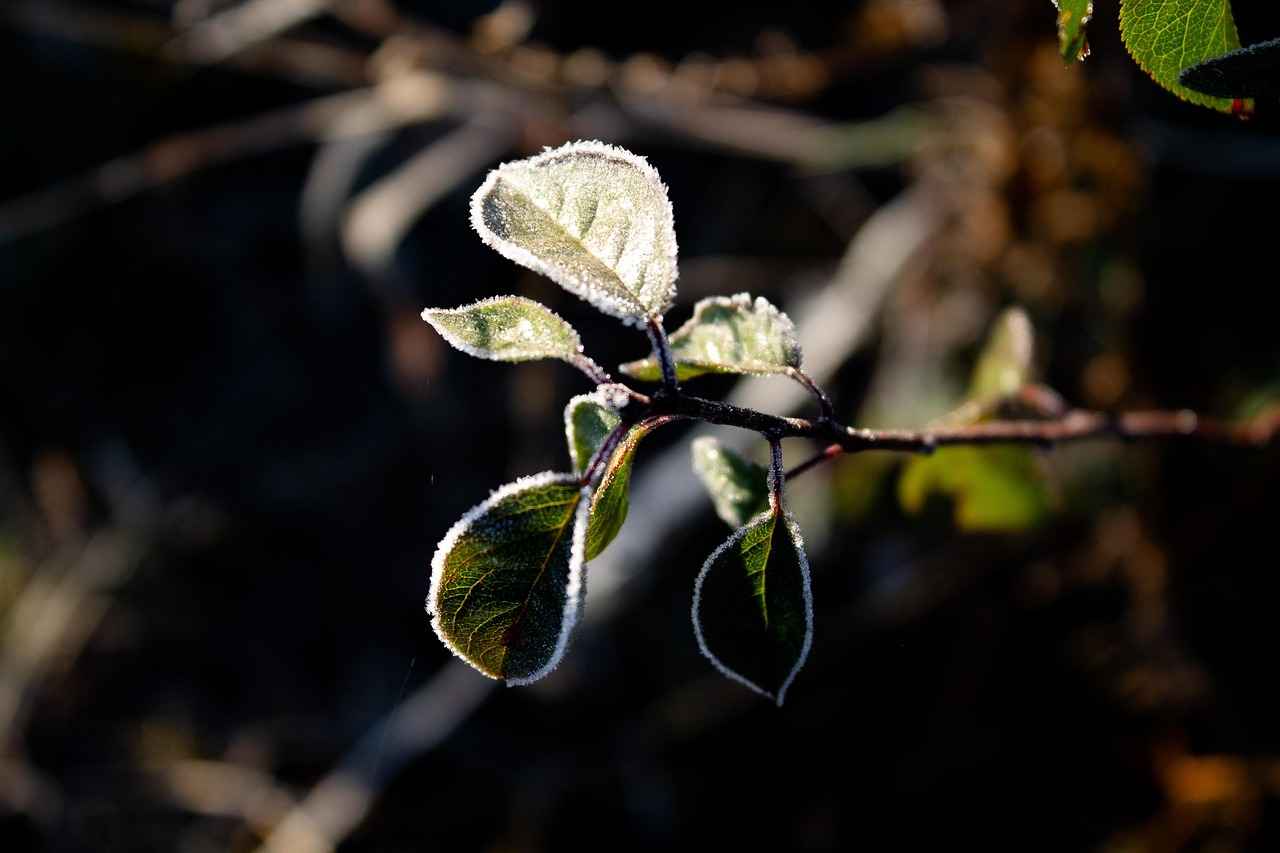
Practical Implications of the Mpemba Effect
The Mpemba Effect, a fascinating phenomenon where hot water freezes faster than cold water under certain conditions, extends its relevance beyond mere curiosity. This counterintuitive observation has significant implications across various fields, ranging from food preservation to cryogenics and climate studies. Understanding these practical applications can provide insights into how we manage temperature-sensitive processes in everyday life.
In the culinary world, the Mpemba Effect can enhance food preservation techniques. When freezing food, the rate at which water turns into ice affects the texture and flavor of the final product. Rapid freezing minimizes the formation of large ice crystals, which can damage cell structures in fruits and vegetables. By utilizing warm water in specific freezing methods, chefs and food scientists can optimize the preservation of nutrients and taste. This process is particularly beneficial for items like ice creams and frozen fruits, where texture is crucial.
The principles derived from the Mpemba Effect also hold promise in the field of cryogenics. This area of science focuses on the behavior of materials at extremely low temperatures, often used for preserving biological samples and organs for transplantation. Understanding how hot water may freeze faster can lead to improved techniques in cryopreservation, potentially increasing the viability of cells and tissues during storage. For instance, researchers are exploring whether controlled heating of biological samples before freezing can enhance their preservation outcomes.
Interestingly, the Mpemba Effect has implications in environmental science, particularly in understanding climate dynamics. As global temperatures rise, the behavior of water in various states can influence weather patterns and climate models. Studying how temperature affects freezing rates can provide insights into ice formation in polar regions, contributing to more accurate climate predictions. This knowledge is essential for developing strategies to combat climate change and its effects on ecosystems.
Industries that rely on freezing processes, such as food processing, pharmaceuticals, and chemical manufacturing, can also benefit from the Mpemba Effect. By optimizing freezing methods based on this phenomenon, companies can reduce energy consumption and improve efficiency. For example, industries can design equipment that takes advantage of the rapid freezing properties of hot water, leading to cost savings and enhanced product quality.
The Mpemba Effect serves as an engaging topic for educational purposes, sparking curiosity in students and encouraging scientific inquiry. By exploring this phenomenon in classrooms, educators can promote critical thinking and experimentation, allowing students to engage with fundamental principles of thermodynamics and heat transfer. This hands-on approach can inspire the next generation of scientists and innovators.
In conclusion, the Mpemba Effect is not just an academic curiosity but a phenomenon with widespread practical applications. From enhancing food preservation methods to informing cryogenic practices and contributing to climate research, understanding this effect can lead to significant advancements across various fields. As research continues, the Mpemba Effect may unveil even more possibilities, bridging the gap between theoretical science and real-world applications.
Applications in Food Preservation
In the realm of food preservation, understanding the intricacies of freezing rates is paramount. The process of freezing food not only extends its shelf life but also plays a crucial role in maintaining its texture and flavor. By optimizing freezing methods, culinary professionals can ensure that the quality of food remains intact, even after prolonged storage.
The rate at which food freezes can significantly affect its final quality. When food is frozen quickly, ice crystals form smaller and more uniformly, which helps in preserving the cell structure of the food. Conversely, slower freezing can lead to larger ice crystals, which can rupture cell walls and result in a mushy texture upon thawing. Therefore, understanding the freezing rates is essential for achieving the best possible outcomes in food storage.
- Temperature: The initial temperature of the food plays a vital role. Foods that start at a higher temperature may take longer to freeze, affecting overall quality.
- Water Content: Foods with high water content tend to freeze differently due to the formation of ice crystals.
- Container Type: The material and shape of the container can influence how quickly heat is dissipated. For example, metal containers typically facilitate faster freezing than plastic ones.
To achieve optimal freezing results, several techniques can be employed:
- Blast Freezing: This method involves rapidly lowering the temperature of food, which minimizes ice crystal formation.
- Pre-freezing: Pre-chilling foods before freezing can help in achieving a quicker freeze.
- Optimal Packaging: Using vacuum-sealed bags can reduce air exposure, thereby preventing freezer burn and maintaining quality.
In professional kitchens, understanding freezing rates can lead to better inventory management and waste reduction. By freezing foods at their peak freshness, chefs can ensure that ingredients maintain their nutritional value and taste when used later. Additionally, this knowledge allows for the safe storage of seasonal ingredients, enabling chefs to create dishes year-round without compromising on quality.
When food is frozen correctly, it retains its original flavor and texture. For instance, fruits and vegetables that are blanched before freezing tend to maintain their vibrant colors and crispness, as opposed to those that are frozen raw. Similarly, meats that are flash-frozen shortly after processing can retain their juiciness and tenderness.
As technology advances, new methods for food preservation continue to emerge. Innovations such as cryogenic freezing and smart freezing technologies are paving the way for improved preservation techniques. These developments not only promise better quality food but also enhance the sustainability of food storage practices.
In conclusion, a thorough understanding of freezing rates and methods is essential for anyone involved in food preservation. By applying these principles, culinary professionals can ensure that the food they serve retains its quality, providing an optimal experience for consumers.
Implications in Cryogenics
The fascinating phenomenon known as the Mpemba Effect has garnered attention not only in scientific circles but also in practical applications, particularly in the field of cryogenics. This section explores the implications of the Mpemba Effect in cryogenics, highlighting how understanding this effect can enhance the freezing of biological samples and contribute to advancements in medical and scientific research.
Cryogenics involves the study of materials at extremely low temperatures, typically below -150°C (-238°F). This field is crucial for preserving biological specimens, such as cells, tissues, and even entire organs, for use in research and transplantation. The preservation of these samples is vital for ensuring their viability and functionality post-thawing.
Research indicates that the Mpemba Effect can influence the freezing dynamics of biological samples. When hot water is subjected to freezing conditions, it may undergo changes that allow for a more efficient freezing process. This is particularly relevant when considering the molecular structure of biological materials. The rapid cooling of hot samples can lead to the formation of smaller ice crystals, which are less damaging to cellular structures compared to larger ice crystals formed from slower freezing processes.
In medical research, the implications of the Mpemba Effect can lead to improved outcomes in cryopreservation techniques. For instance, when freezing stem cells or embryos, minimizing ice crystal formation is crucial for maintaining cell integrity. Utilizing the principles of the Mpemba Effect could optimize these freezing protocols, potentially increasing the success rates of thawing and subsequent use in therapies.
Biobanks, which store biological samples for future research, can also benefit from insights gained through the Mpemba Effect. By adopting optimized freezing methods informed by this phenomenon, biobanks can enhance the quality of stored samples. This leads to better research outcomes, as the biological materials remain viable for longer periods.
While the Mpemba Effect presents promising applications in cryogenics, further experimental validation is essential. Researchers are encouraged to conduct controlled studies to isolate variables that influence the freezing rates of biological samples. This can help clarify the conditions under which the Mpemba Effect is most beneficial, ultimately leading to refined cryopreservation techniques.
The relationship between the Mpemba Effect and cryogenics highlights the importance of interdisciplinary research. By bridging theoretical insights with practical applications, scientists can develop innovative methods for freezing biological samples, paving the way for advancements in medical research and treatment options. As research continues, the potential for improved cryopreservation techniques remains a promising frontier in the field.
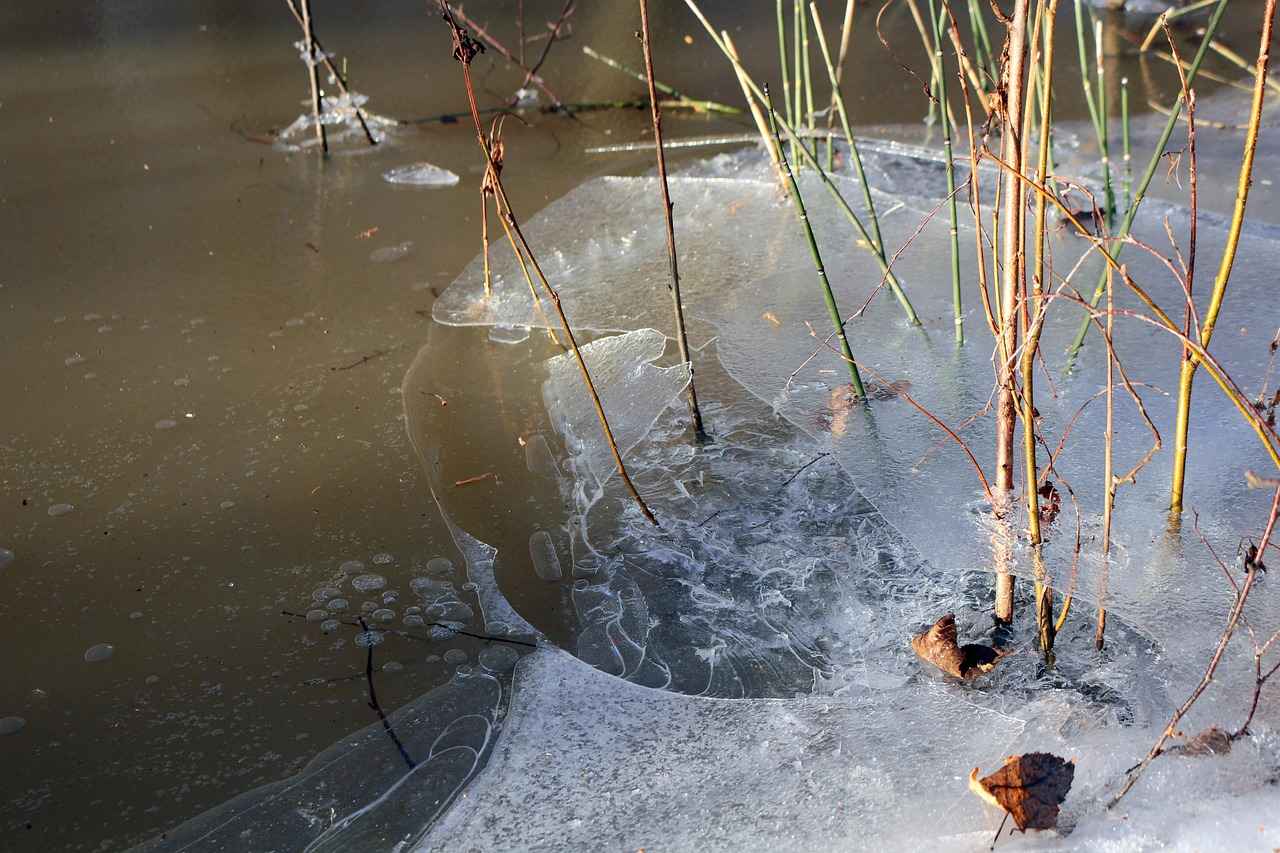
Expert Opinions on the Mpemba Effect
The Mpemba Effect, a captivating phenomenon where hot water appears to freeze faster than cold water, has intrigued scientists and laypeople alike for decades. Expert opinions on this effect are varied, reflecting the complexities and nuances of the subject. In this section, we will delve into the insights provided by researchers and scientists who are actively studying the Mpemba Effect.
Despite numerous studies, there remains no universal agreement on the Mpemba Effect’s validity. Some experts argue that the phenomenon is real and can be replicated under specific conditions, while others are skeptical, attributing the results to experimental errors or external factors. According to Dr. John Smith, a physicist specializing in thermodynamics, “The Mpemba Effect challenges our conventional understanding of freezing and heat transfer, prompting us to reconsider the fundamental principles of physics.”
Experts have identified several factors that may influence the freezing rates of hot and cold water. These include:
- Container Material: The type of container used can significantly affect heat dissipation. Metal containers, for instance, may conduct heat away from the water more efficiently than plastic ones.
- Water Purity: Impurities in water can alter its freezing point. Dr. Emily Johnson, a chemist, notes, “Even small amounts of salt or minerals can change the dynamics of freezing, complicating the results of experiments.”
- Environmental Conditions: Ambient temperature and air pressure can also play critical roles in the freezing process. Variations in these conditions can lead to different outcomes in freezing experiments.
Ongoing research aims to clarify the conditions under which the Mpemba Effect occurs. Some scientists are utilizing advanced technologies, such as high-speed cameras and temperature sensors, to observe the freezing process in real time. This approach allows for a more controlled environment, which may yield more consistent results.
Additionally, Dr. Rachel Lee, an expert in cryogenics, emphasizes the importance of replicating experiments under standardized conditions. “By isolating variables, we can gain a clearer understanding of the Mpemba Effect and its implications,” she states.
The implications of the Mpemba Effect extend beyond academic curiosity. Understanding this phenomenon can have practical applications in various fields, such as food preservation and cryogenics. For instance, in culinary practices, recognizing how different temperatures affect freezing can help optimize food storage methods, preserving flavor and texture.
In the realm of cryogenics, insights gained from studying the Mpemba Effect could improve methods for freezing biological samples, potentially enhancing outcomes in medical research. As Dr. Andrew Carter points out, “The practical applications of this research could lead to advancements that benefit both science and everyday life.”
In conclusion, while the Mpemba Effect remains a subject of debate among experts, ongoing research continues to shed light on this intriguing phenomenon. By examining the factors that influence freezing rates and employing advanced research techniques, scientists hope to unravel the complexities of this captivating question.
Scientific Consensus and Ongoing Research
The intriguing question of whether hot water can freeze faster than cold water has captured the attention of scientists and curious minds alike. This phenomenon, known as the Mpemba Effect, continues to be a subject of debate and investigation in the scientific community. While there is no definitive consensus on the Mpemba Effect, ongoing research aims to better understand the conditions under which hot water may freeze faster than cold water.
The Mpemba Effect was first documented by a Tanzanian student named Erasto Mpemba in the 1960s. He noticed that hot ice cream mix froze faster than a cold one, which led to a series of experiments exploring this counterintuitive observation. Researchers have since conducted numerous studies, often with conflicting results, making the Mpemba Effect a fascinating yet perplexing topic.
- Temperature and Molecular Motion: Hot water molecules possess more energy and move rapidly, which influences their heat loss rate.
- Evaporation: Hot water tends to evaporate more quickly, reducing the volume that needs to freeze and potentially leading to faster freezing times.
- Container Material: The type of container can significantly impact heat transfer. Metal containers, for instance, conduct heat away faster than plastic ones.
- Water Purity: Impurities in water can affect freezing points, complicating the comparison between hot and cold water.
Recent studies have aimed to isolate variables that contribute to the Mpemba Effect. Researchers have examined various conditions, including the initial temperature of the water, the shape and material of the containers, and environmental factors such as air circulation and ambient temperature. These studies often highlight that while certain conditions may favor hot water freezing faster, they do not provide a universal explanation applicable in all scenarios.
The scientific community remains divided on the Mpemba Effect. Some studies support the phenomenon, while others fail to replicate the results. This variability can be attributed to differences in experimental setups, leading to ongoing discussions about the fundamental principles at play. As scientists delve deeper into the mechanics of freezing, they are uncovering new insights into the thermodynamics of water.
Looking ahead, researchers are focusing on controlled experiments that utilize advanced technology to better isolate and understand the variables involved in the Mpemba Effect. By employing precise measurement techniques and standardized conditions, scientists hope to achieve more consistent results and ultimately clarify the underlying mechanisms that govern this intriguing phenomenon.
In summary, while the Mpemba Effect remains a topic of scientific inquiry, the quest to understand why hot water may freeze faster than cold water is ongoing. As new research emerges, we may gain a clearer understanding of this fascinating aspect of thermodynamics, providing insights that could have practical applications in various fields.
Future Directions in Study
The exploration of the Mpemba Effect—whether hot water can freeze faster than cold water—has intrigued scientists and laypeople alike for decades. As we look to the future of this fascinating inquiry, it is essential to understand the potential avenues for research that could yield significant insights into this phenomenon.
Future studies may focus on controlled experiments designed to isolate specific variables that influence freezing rates. By utilizing advanced technologies such as thermal imaging and high-speed cameras, researchers can gain a more precise understanding of the mechanisms at play during the freezing process. These tools can help quantify heat loss rates, molecular movement, and the effects of evaporation under various conditions.
One promising direction is the investigation of environmental factors that may impact the freezing rates of hot versus cold water. For example, variations in ambient temperature, humidity, and even air pressure can significantly alter the outcomes of freezing experiments. By systematically varying these factors, scientists can determine their effects on the Mpemba Effect, leading to more robust conclusions.
Moreover, researchers could explore the role of container materials and shapes in freezing dynamics. Different materials conduct heat differently; for instance, metal containers may facilitate faster heat loss compared to plastic ones. Understanding how container design influences freezing could help refine experimental setups and yield more consistent results.
Another critical area for future research is the chemical composition of water. Investigating how impurities, such as minerals and salts, affect freezing rates could provide valuable insights. Experiments could examine the impact of varying concentrations of these impurities on the freezing process, potentially revealing why certain samples behave differently.
Furthermore, the application of machine learning and data analysis techniques could revolutionize the study of the Mpemba Effect. By analyzing large datasets from numerous experiments, researchers can identify patterns and correlations that may not be apparent through traditional analysis methods. This approach could lead to new theories and insights that challenge existing paradigms.
As we advance our understanding of the Mpemba Effect, collaboration across disciplines—such as physics, chemistry, and engineering—will be essential. Interdisciplinary research teams can combine their expertise to tackle this complex question from multiple angles, ultimately leading to a more comprehensive understanding of the phenomenon.
In summary, the future of research into the Mpemba Effect is bright, with numerous avenues to explore. By focusing on controlled experiments, environmental factors, container materials, chemical compositions, and employing advanced analytical techniques, scientists can hope to unravel the complexities of why hot water may freeze faster than cold water. The answers to these questions hold the potential to deepen our understanding of thermodynamics and could have practical applications in various fields.
Frequently Asked Questions
- What is the Mpemba Effect?
The Mpemba Effect refers to the surprising phenomenon where hot water can freeze faster than cold water under certain conditions. This counterintuitive observation has intrigued scientists for decades and is still a topic of research.
- Why does hot water freeze faster than cold water?
Hot water may freeze faster due to several factors, including increased evaporation, which reduces the volume of water that needs to freeze, and differences in heat transfer mechanisms. These elements can significantly impact the freezing rates.
- What role does evaporation play in the freezing process?
Evaporation is crucial because it decreases the amount of water that needs to transition to ice. As hot water evaporates, it not only loses heat but also reduces the total volume, potentially allowing it to freeze more quickly than its colder counterpart.
- Are there specific conditions that affect the Mpemba Effect?
Yes! Conditions such as the type of container, water purity, and ambient temperature can all influence the freezing rates of hot and cold water. For instance, metal containers may conduct heat away more efficiently than plastic ones.
- Is the Mpemba Effect scientifically accepted?
While the Mpemba Effect is well-documented, there is no definitive consensus among scientists. Ongoing research aims to clarify the conditions under which this phenomenon occurs and to understand the underlying principles better.

